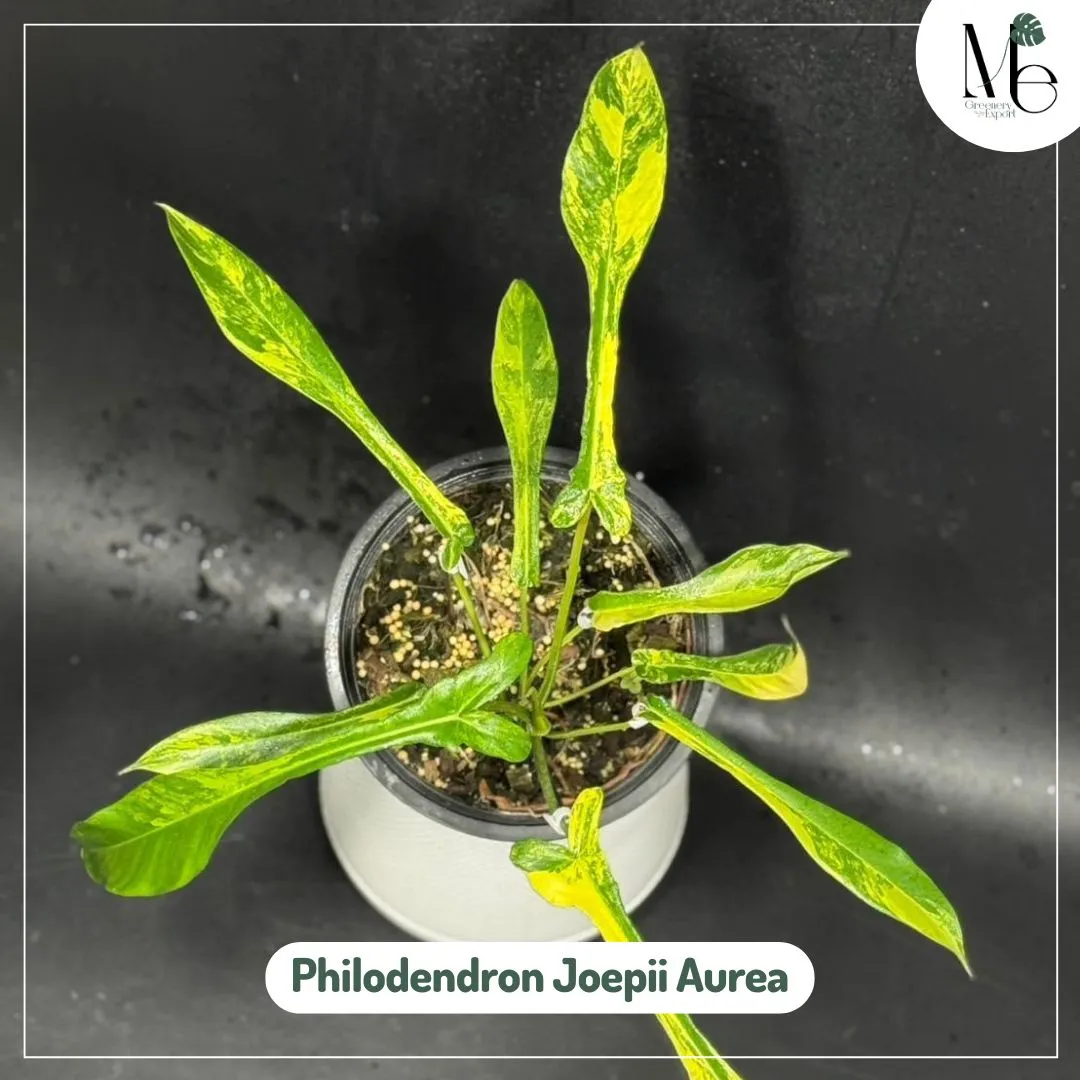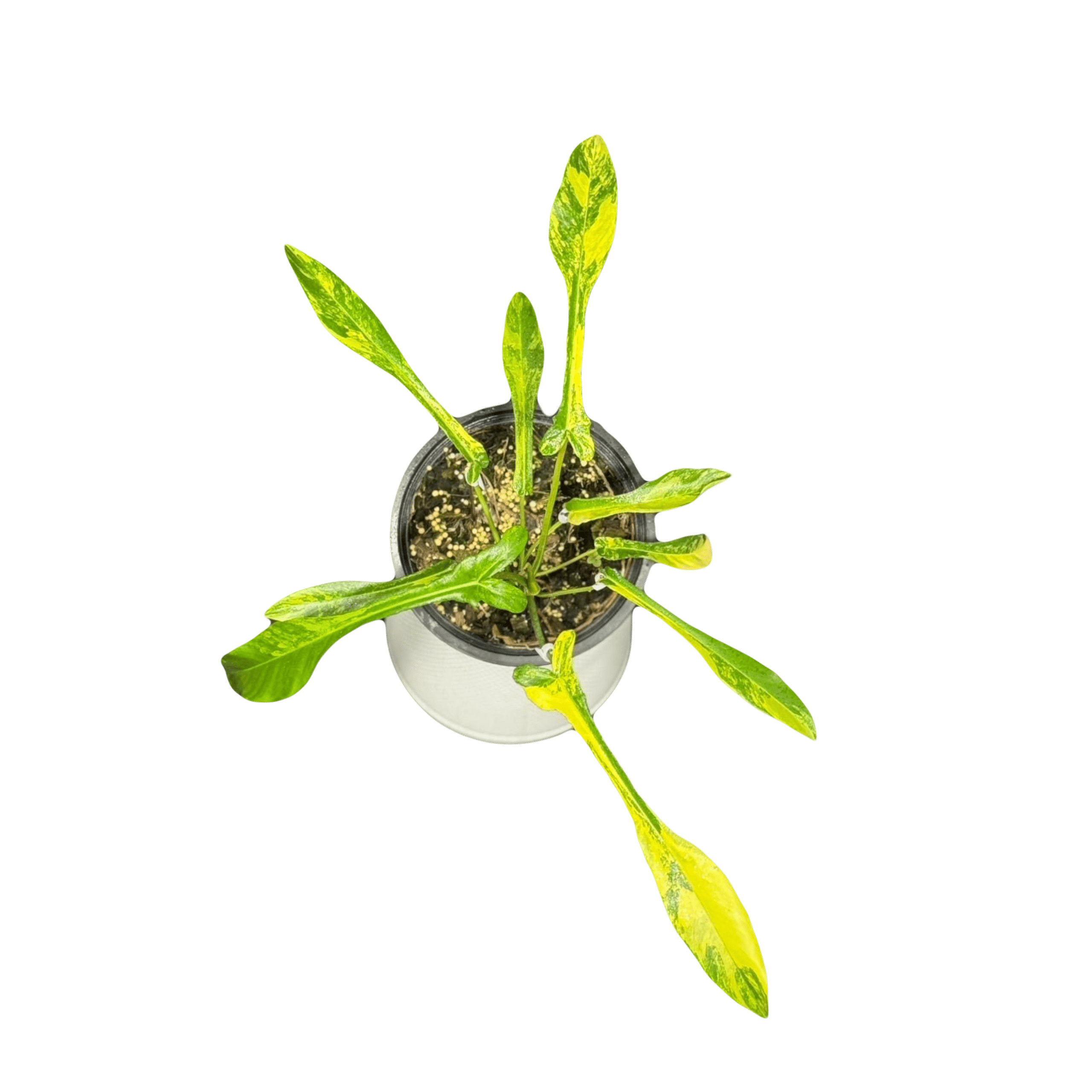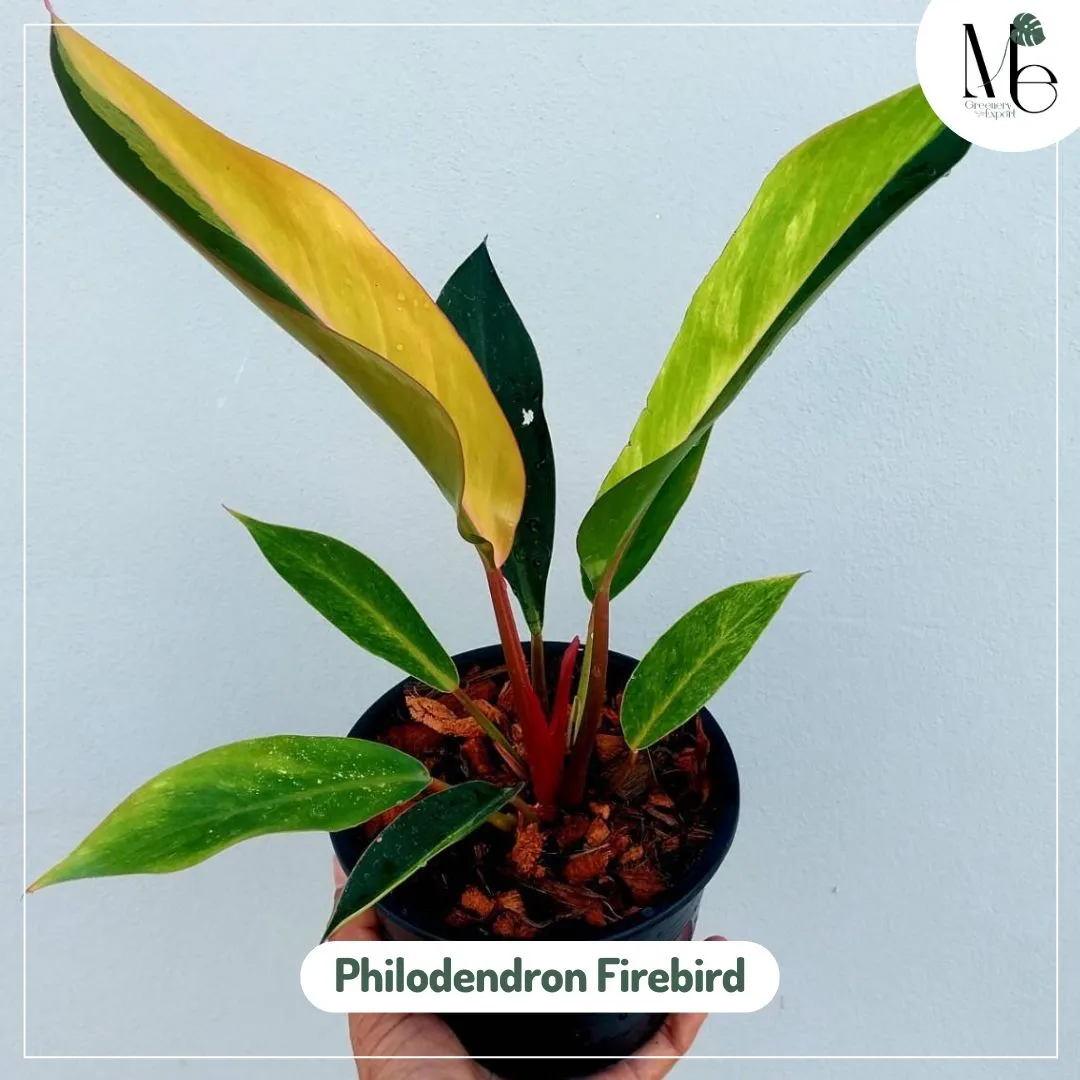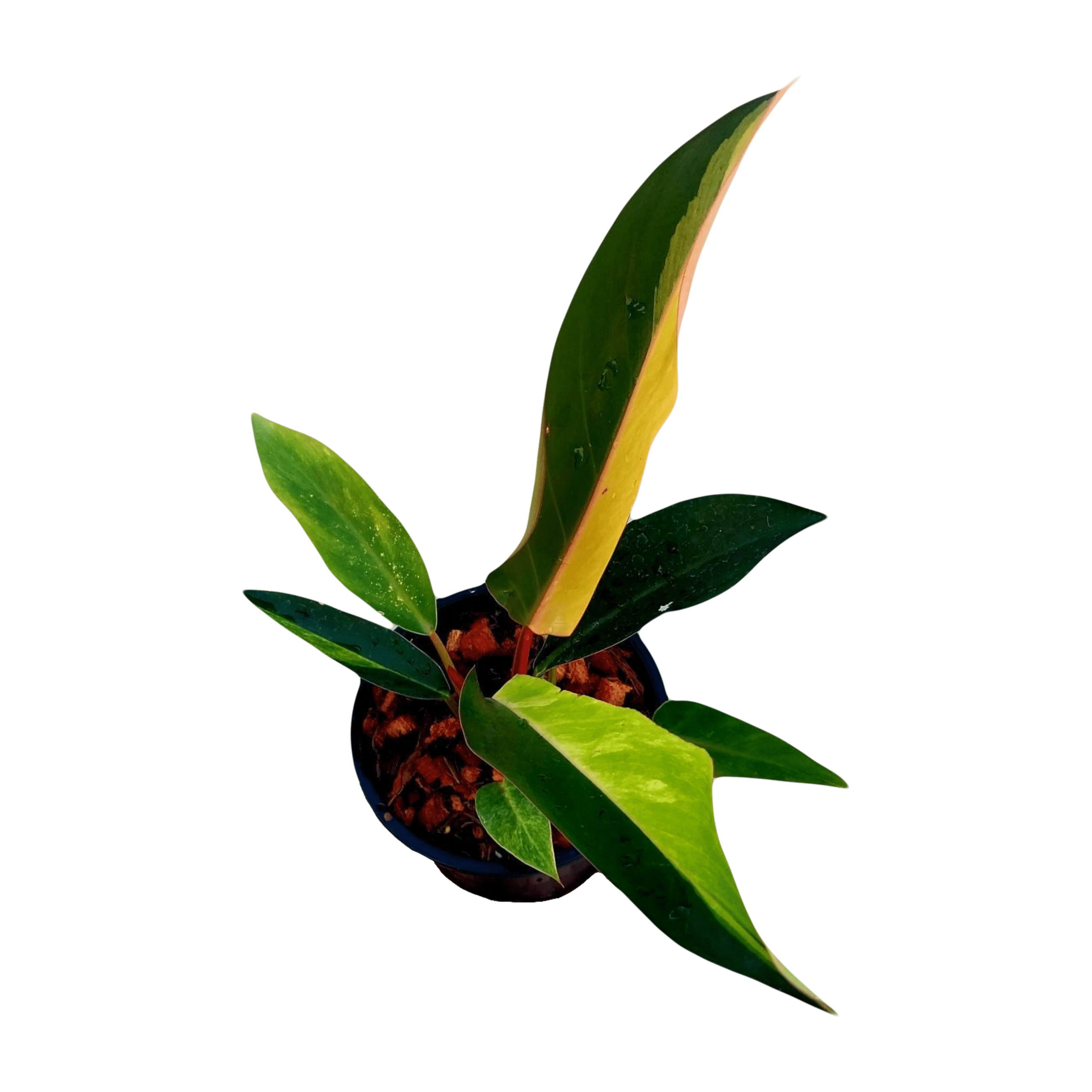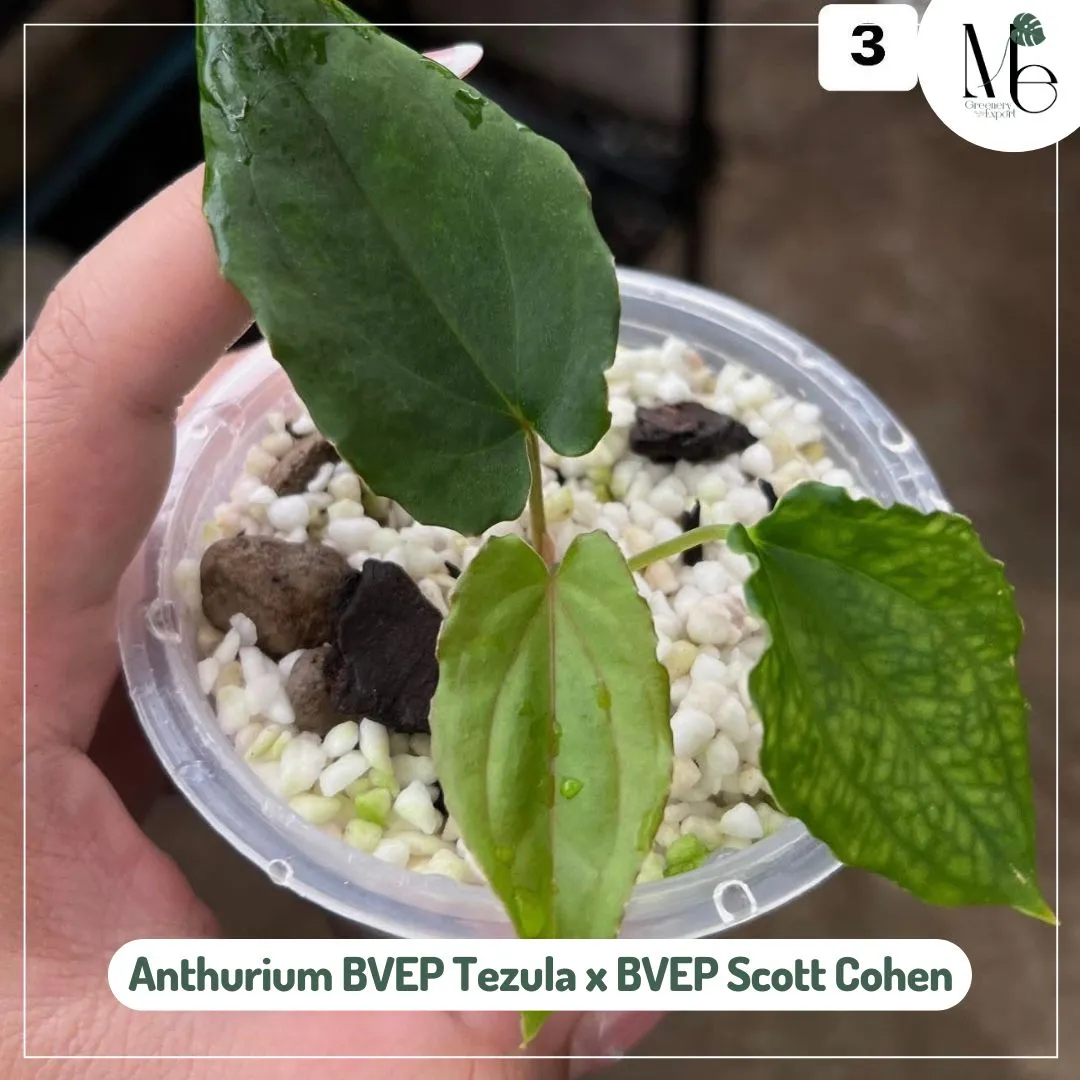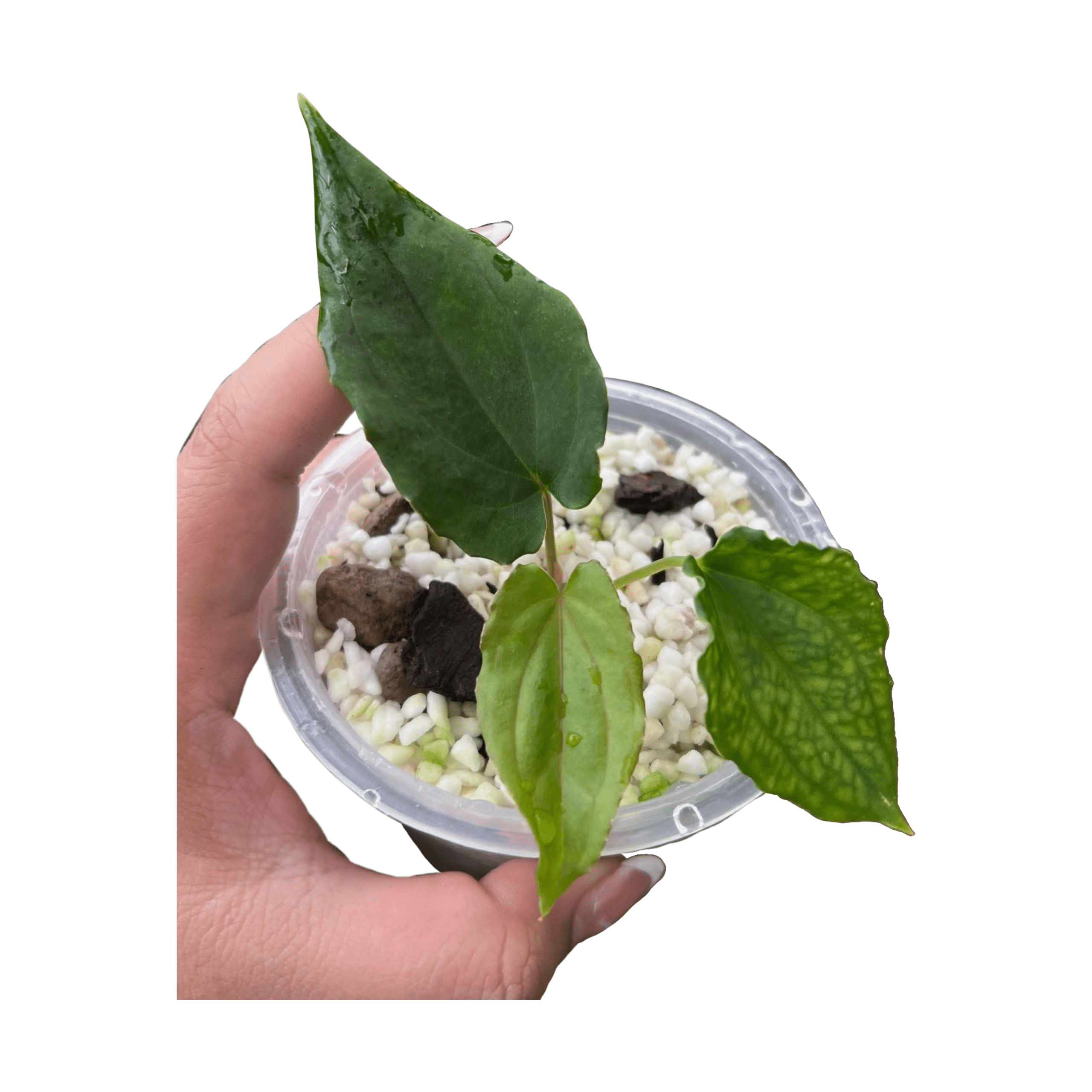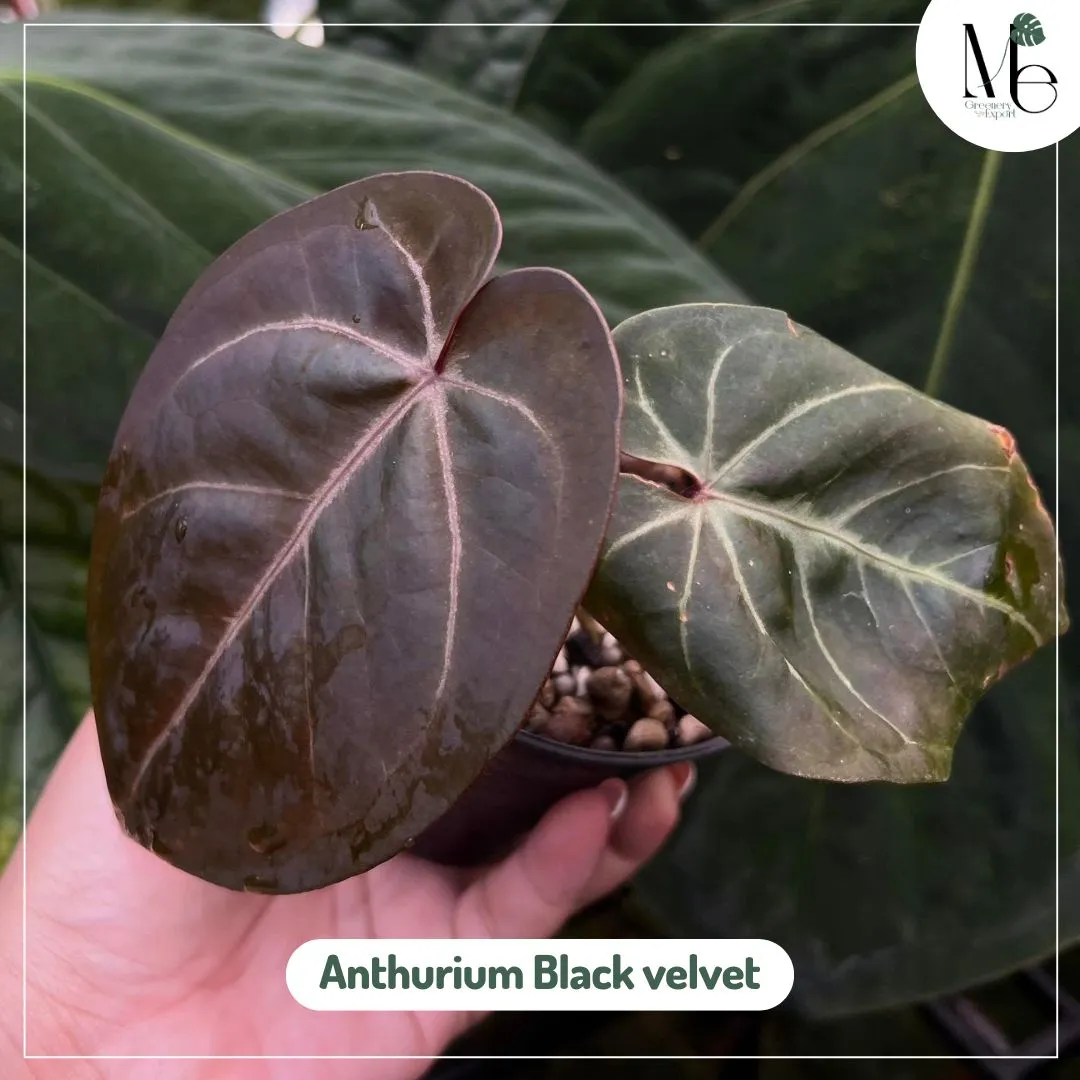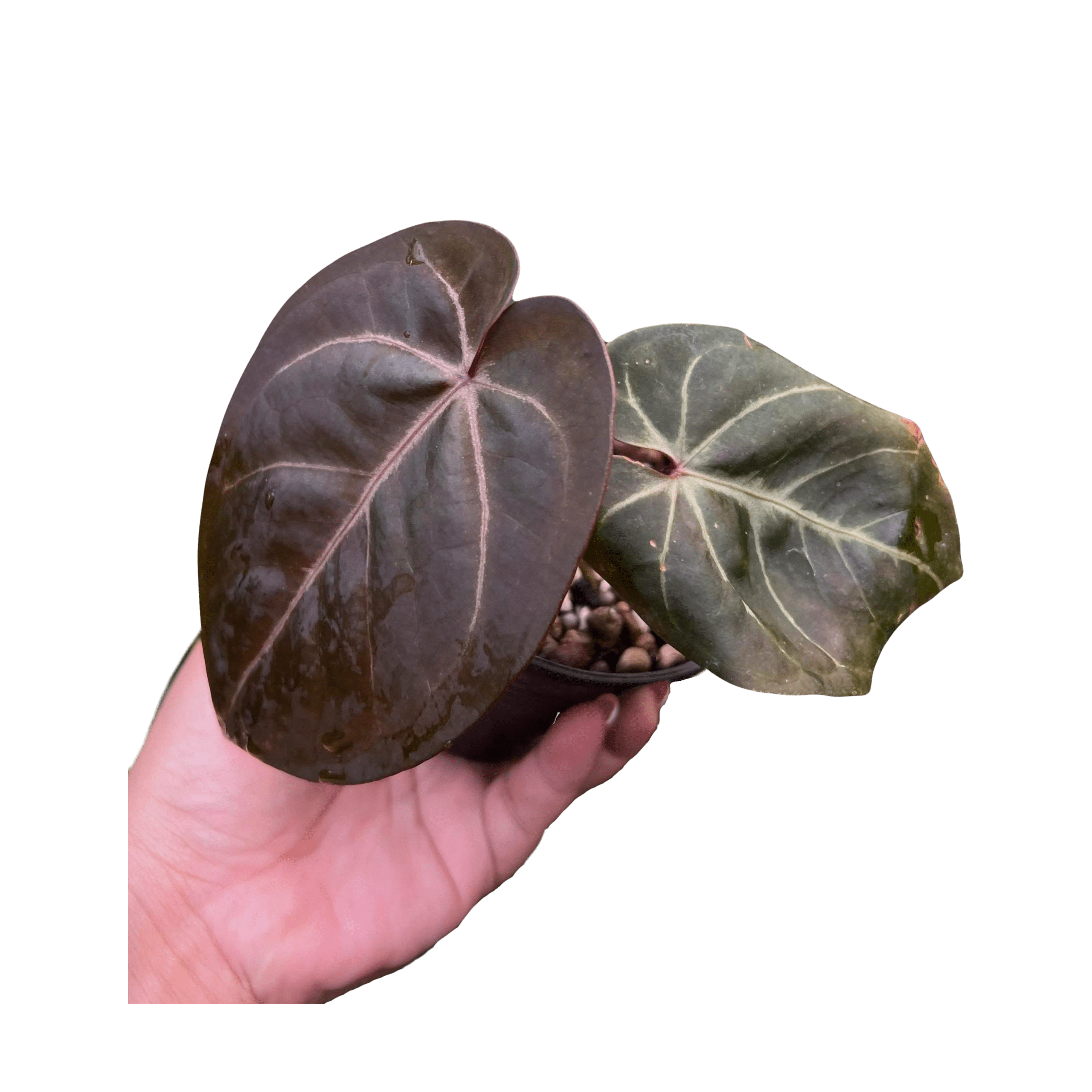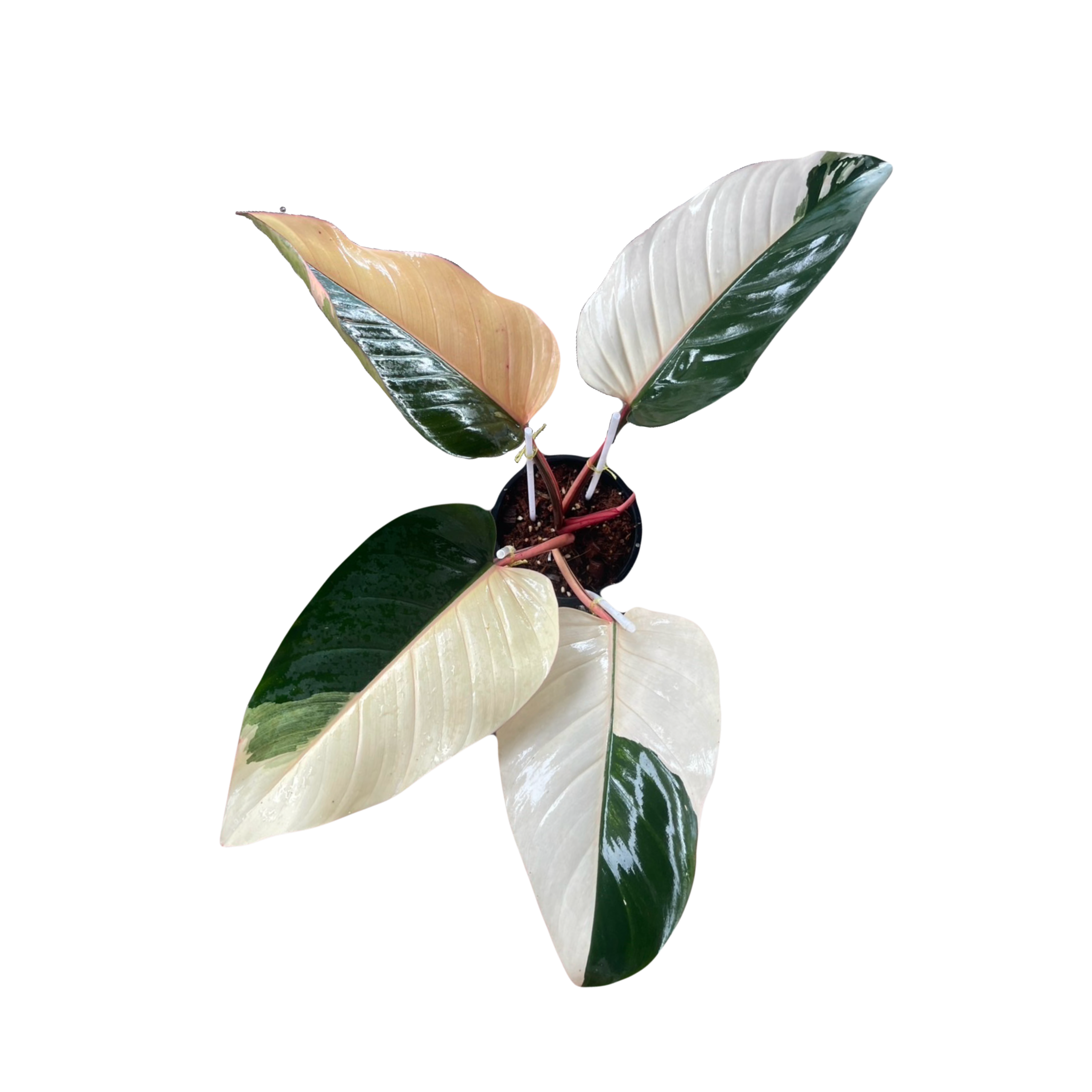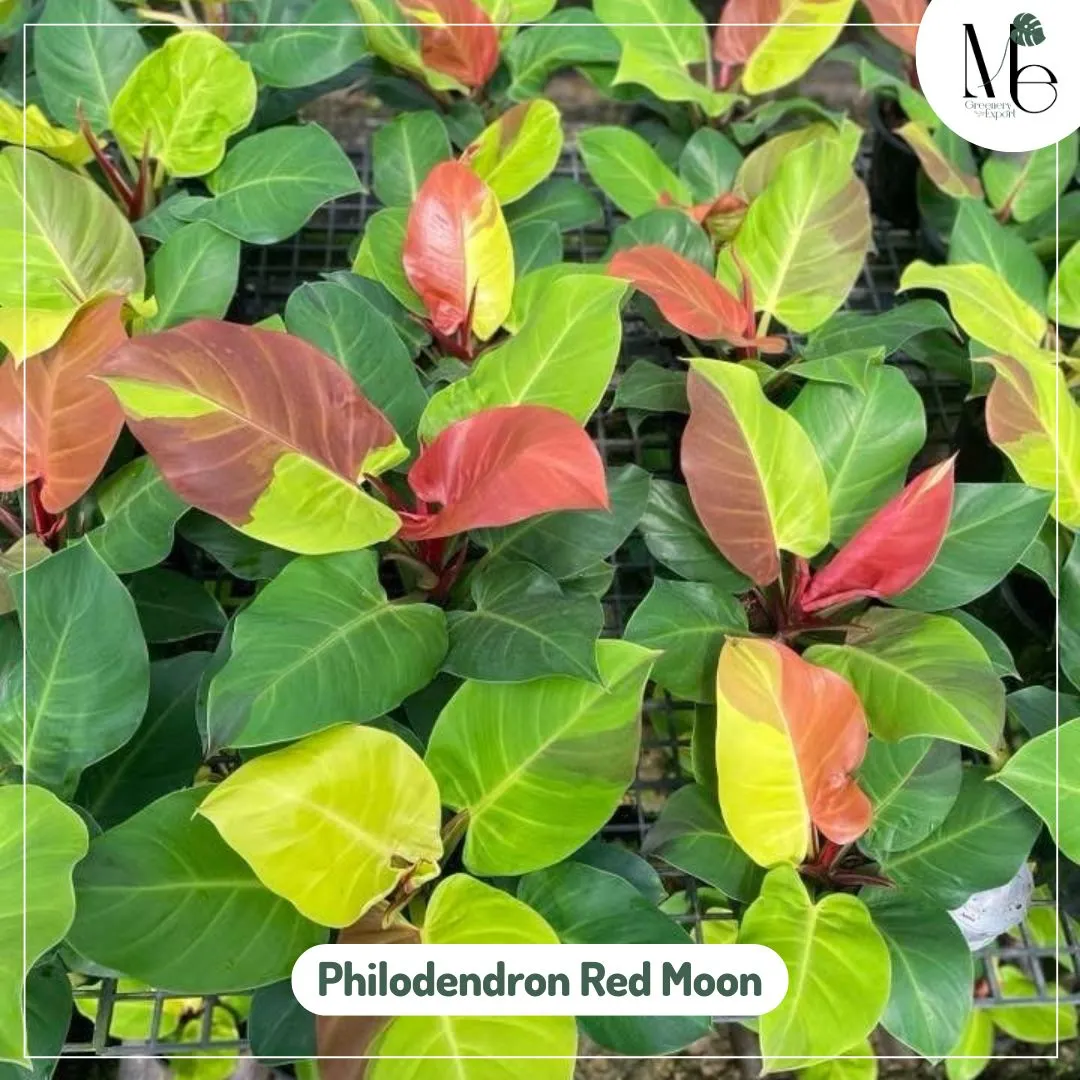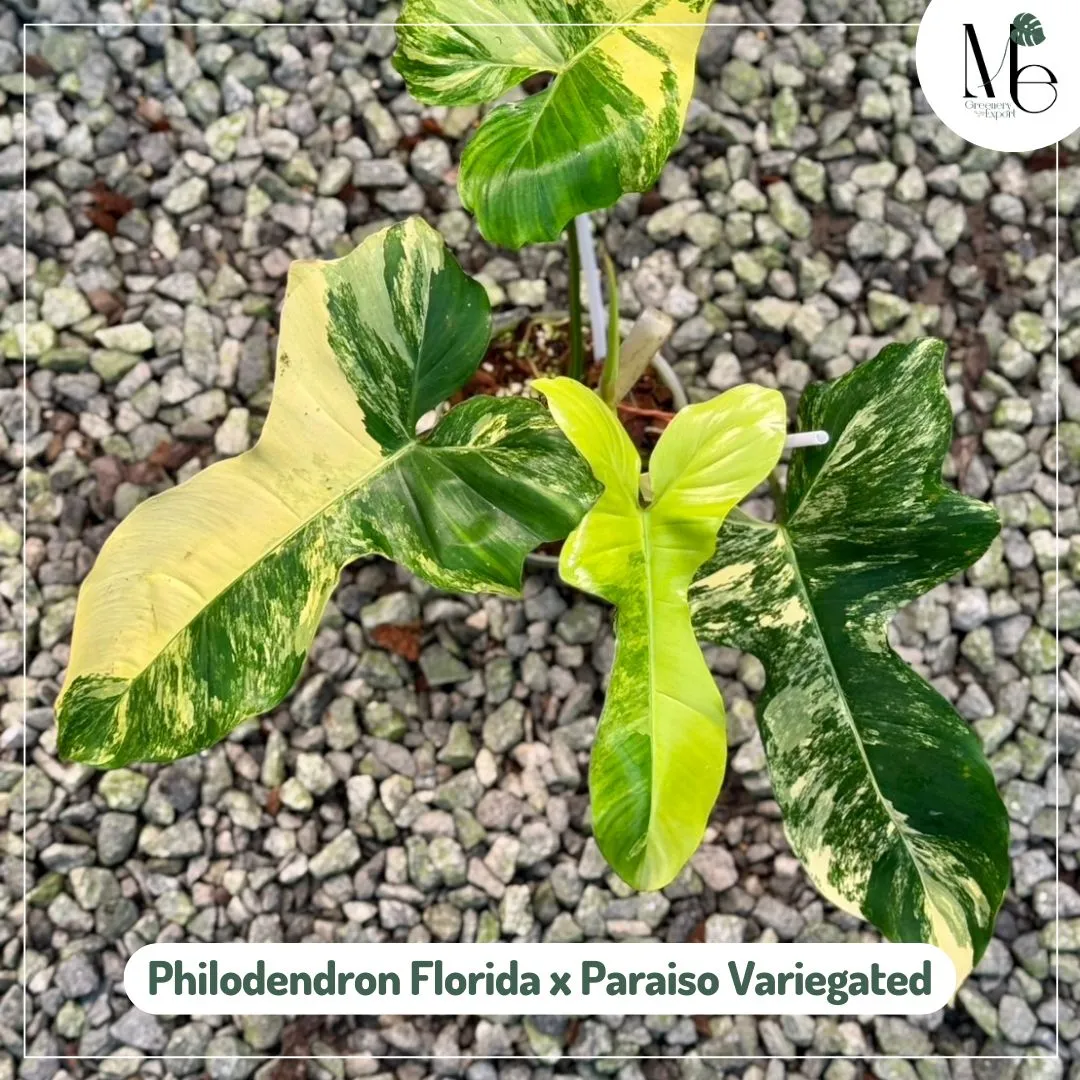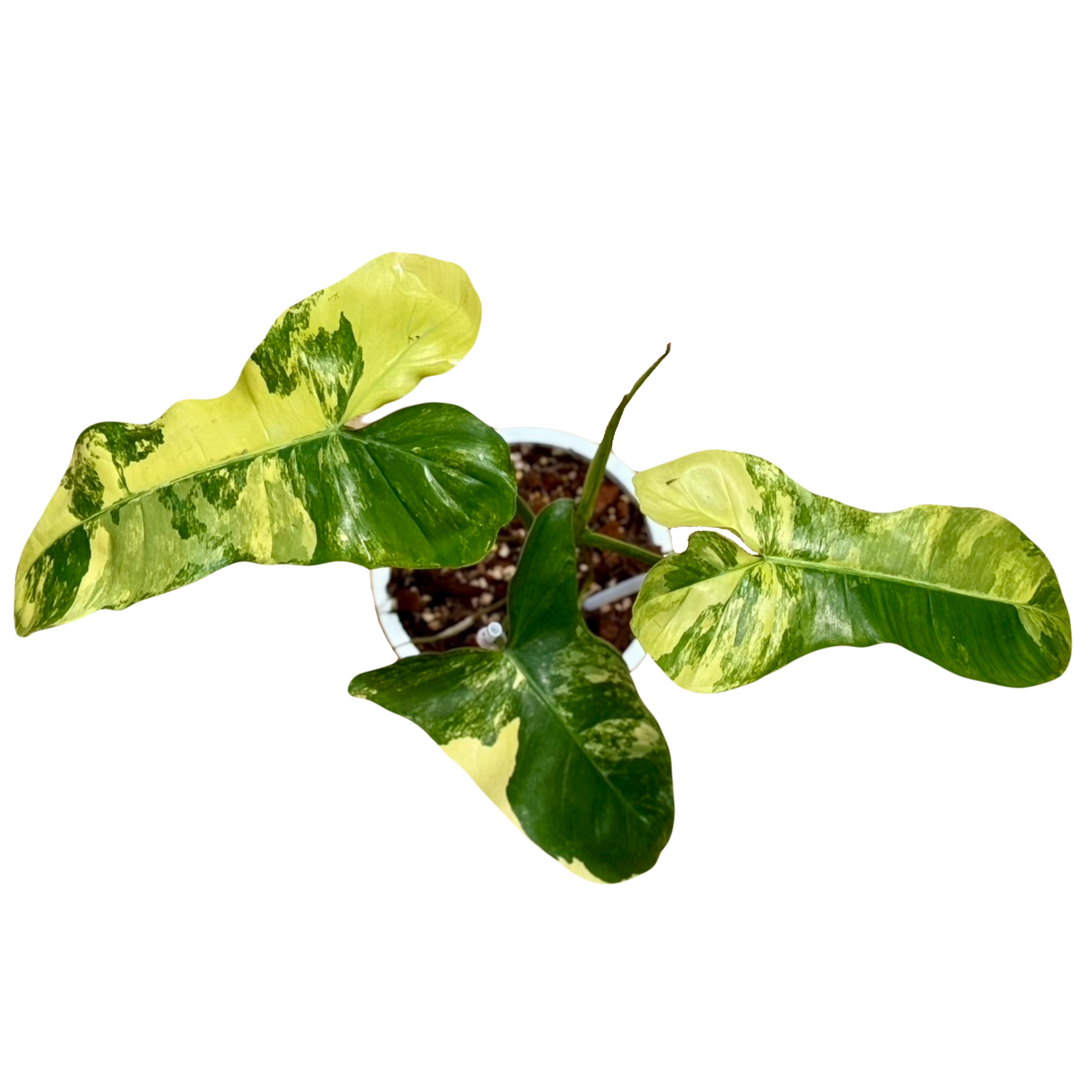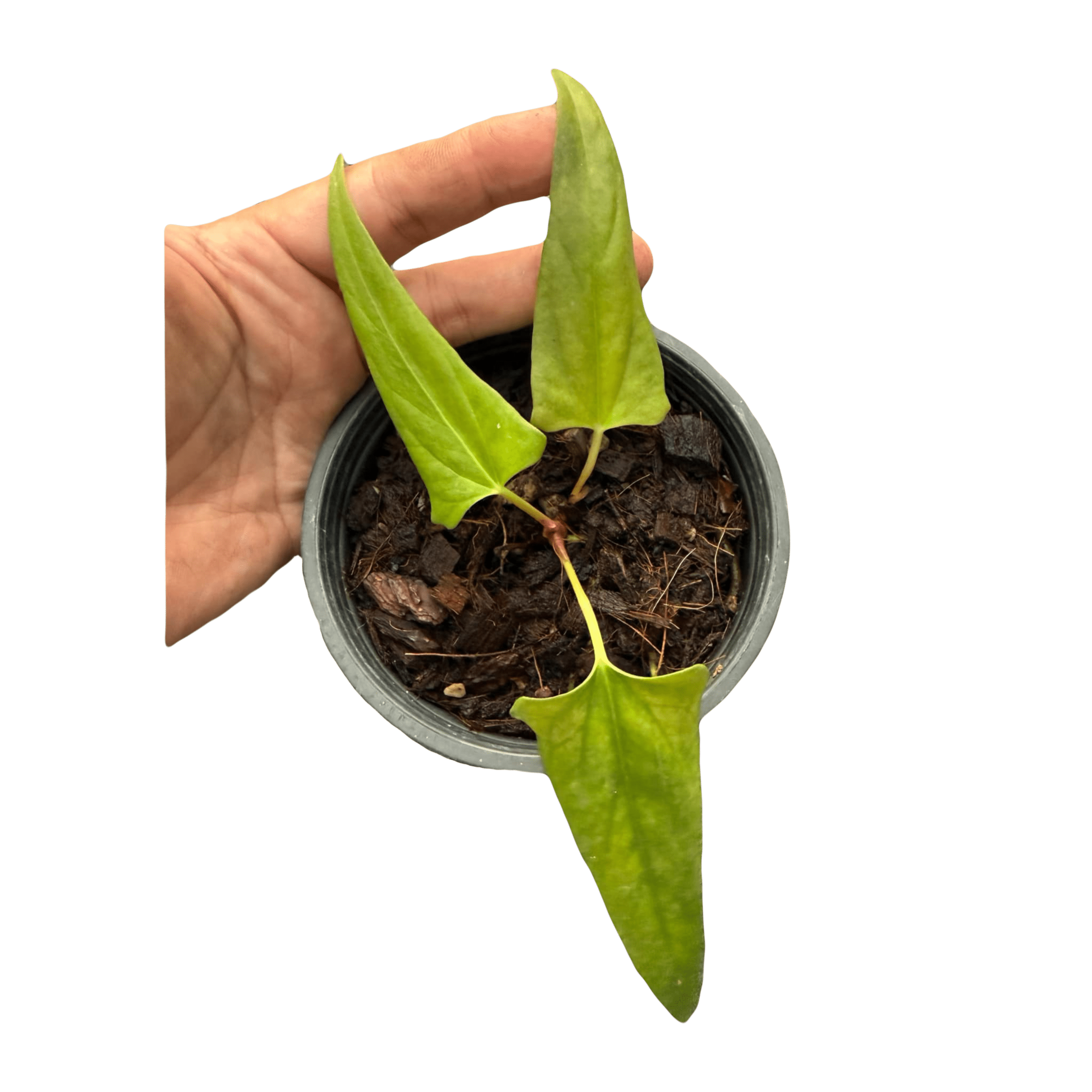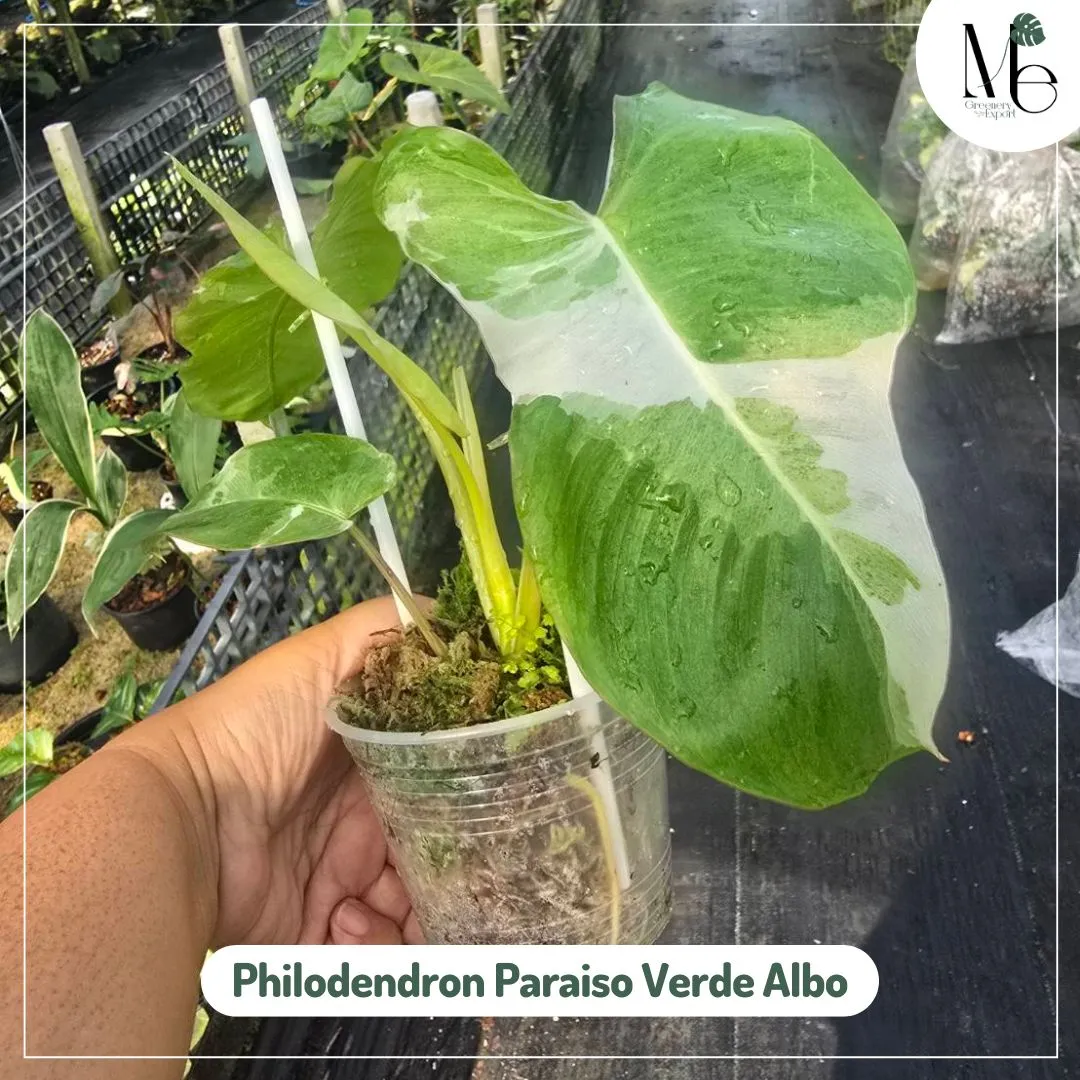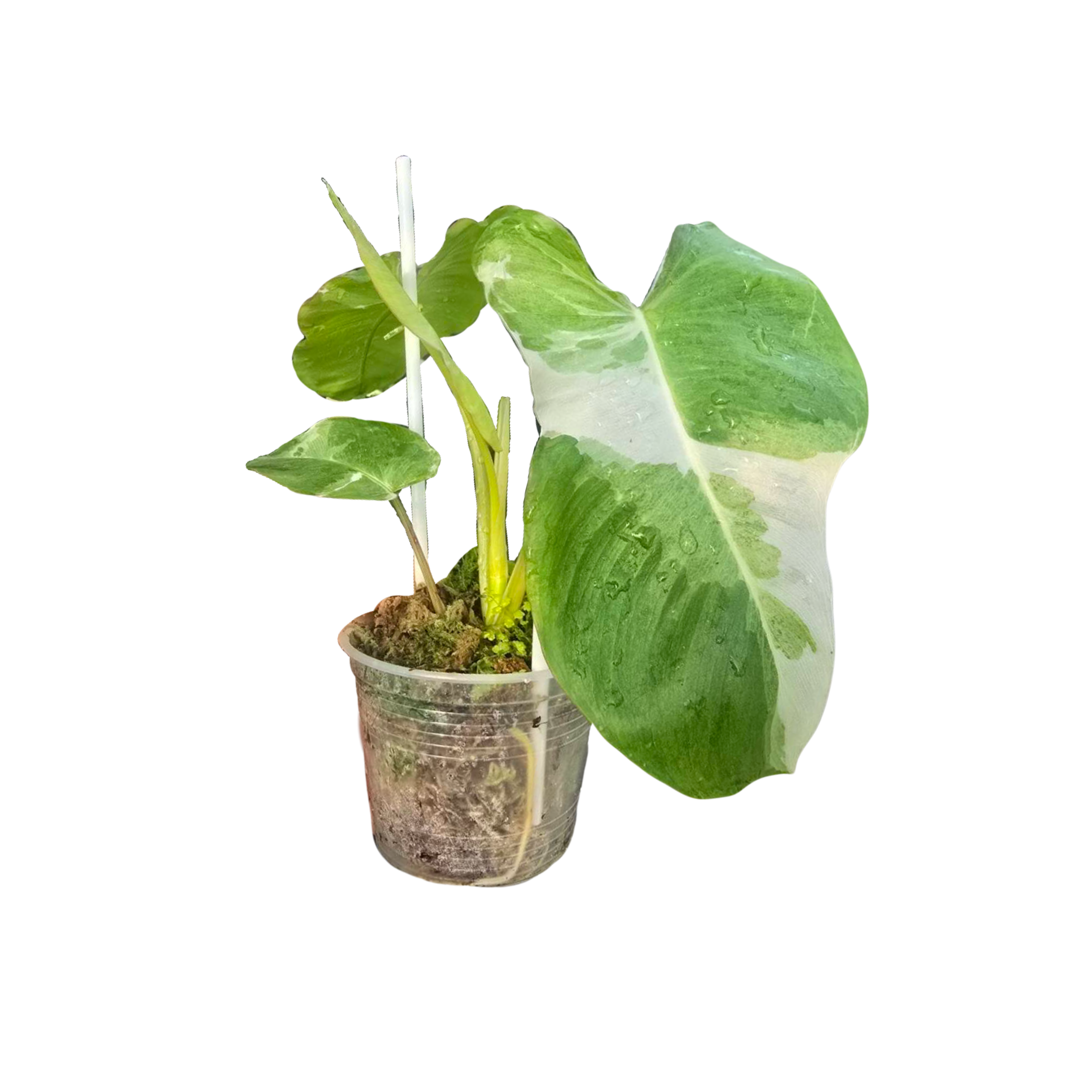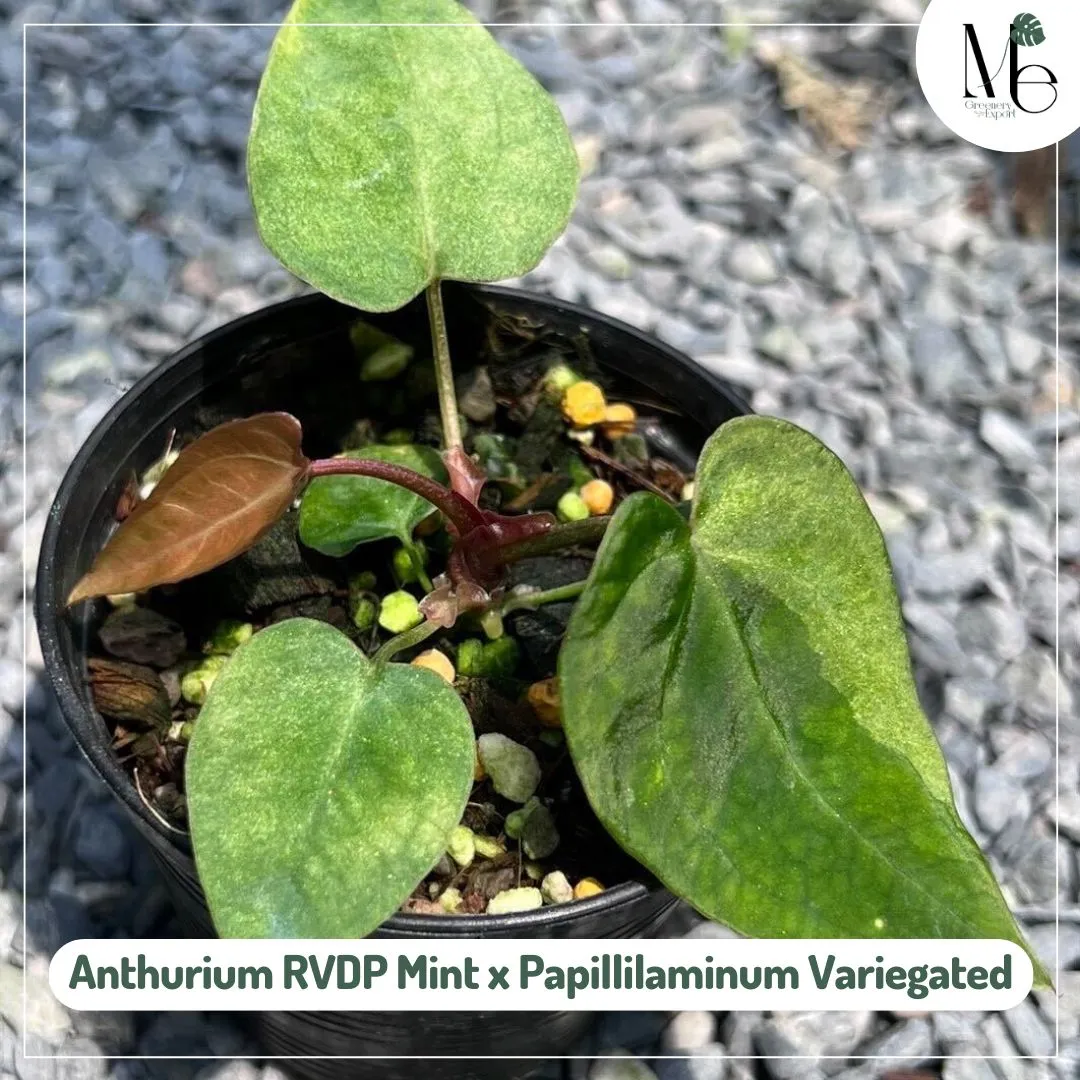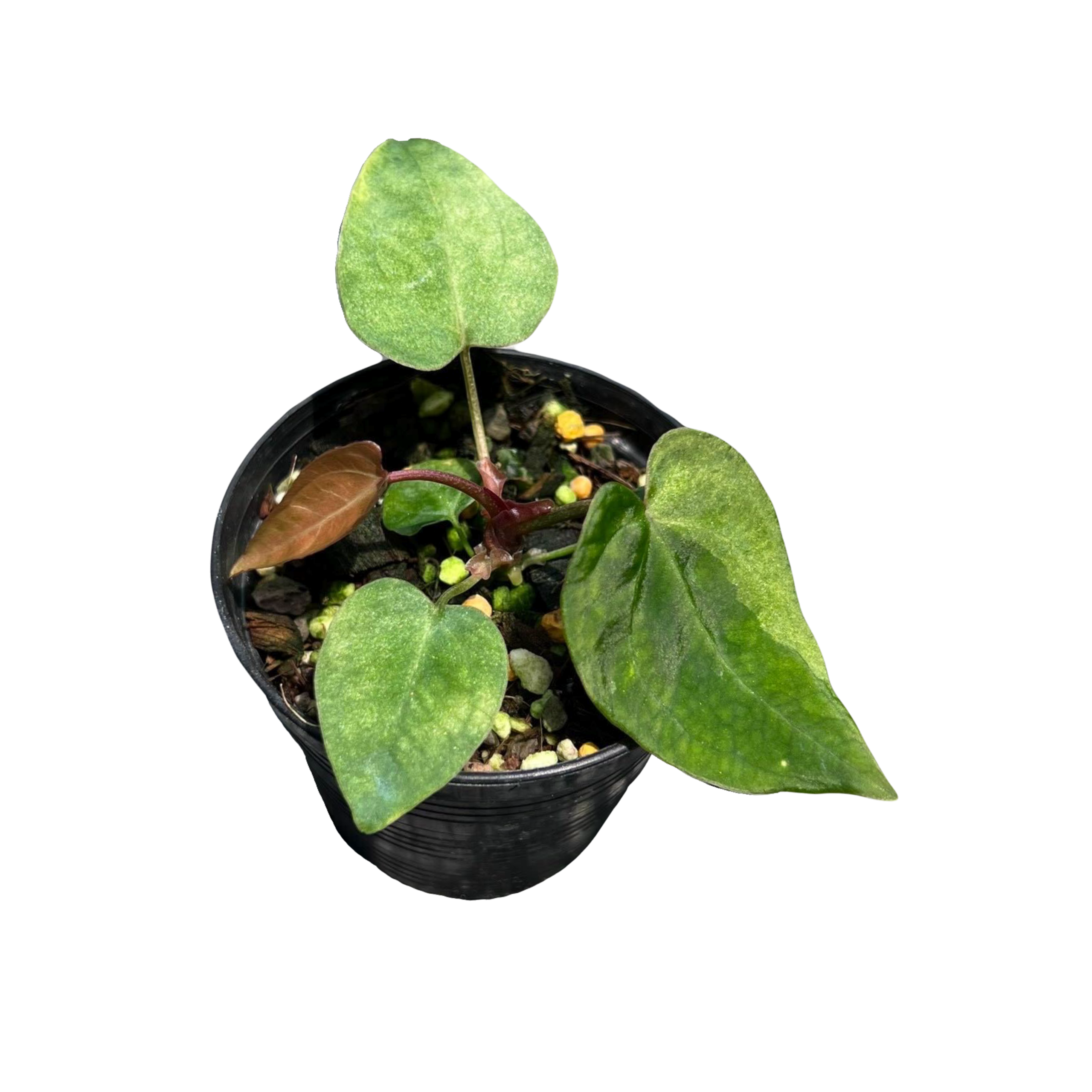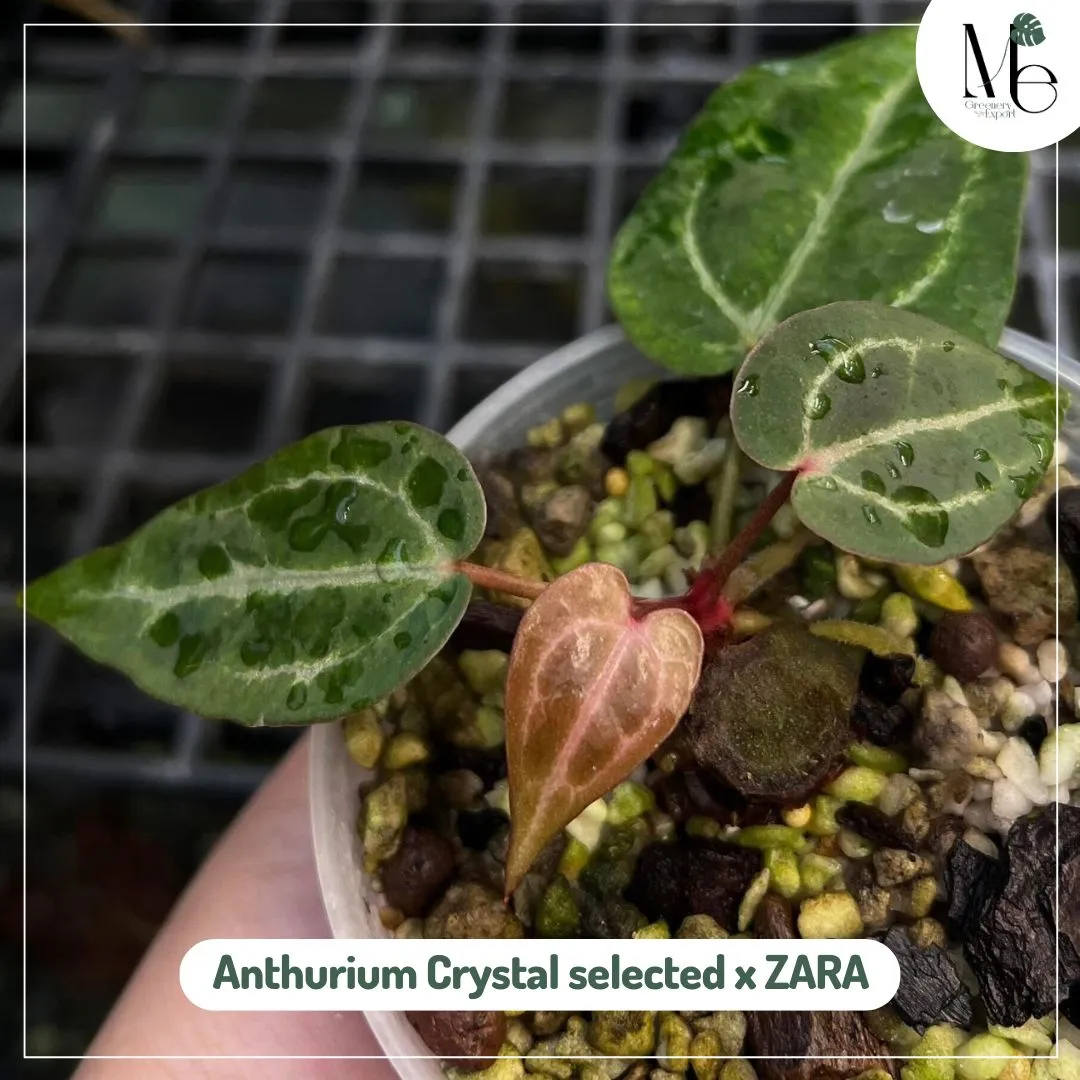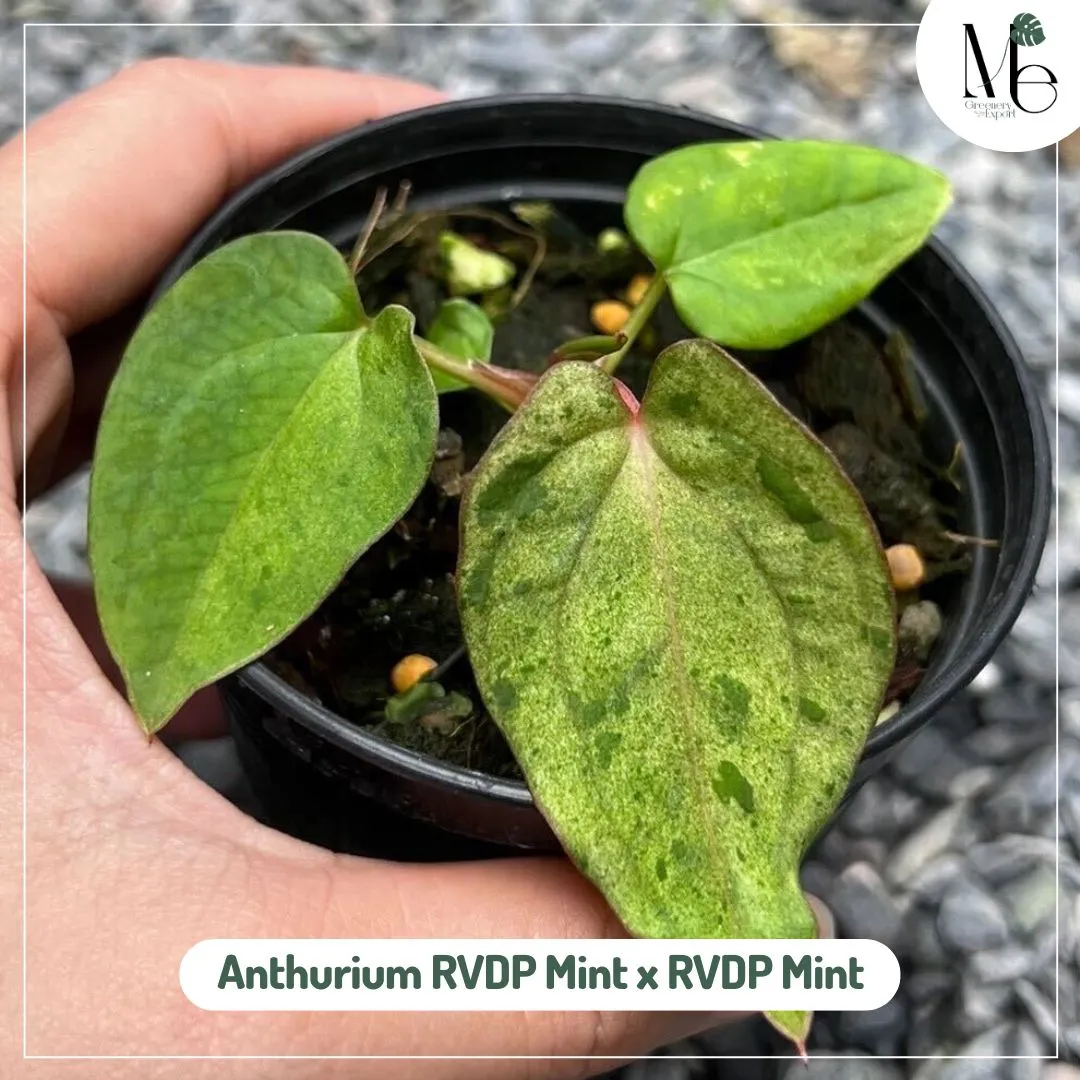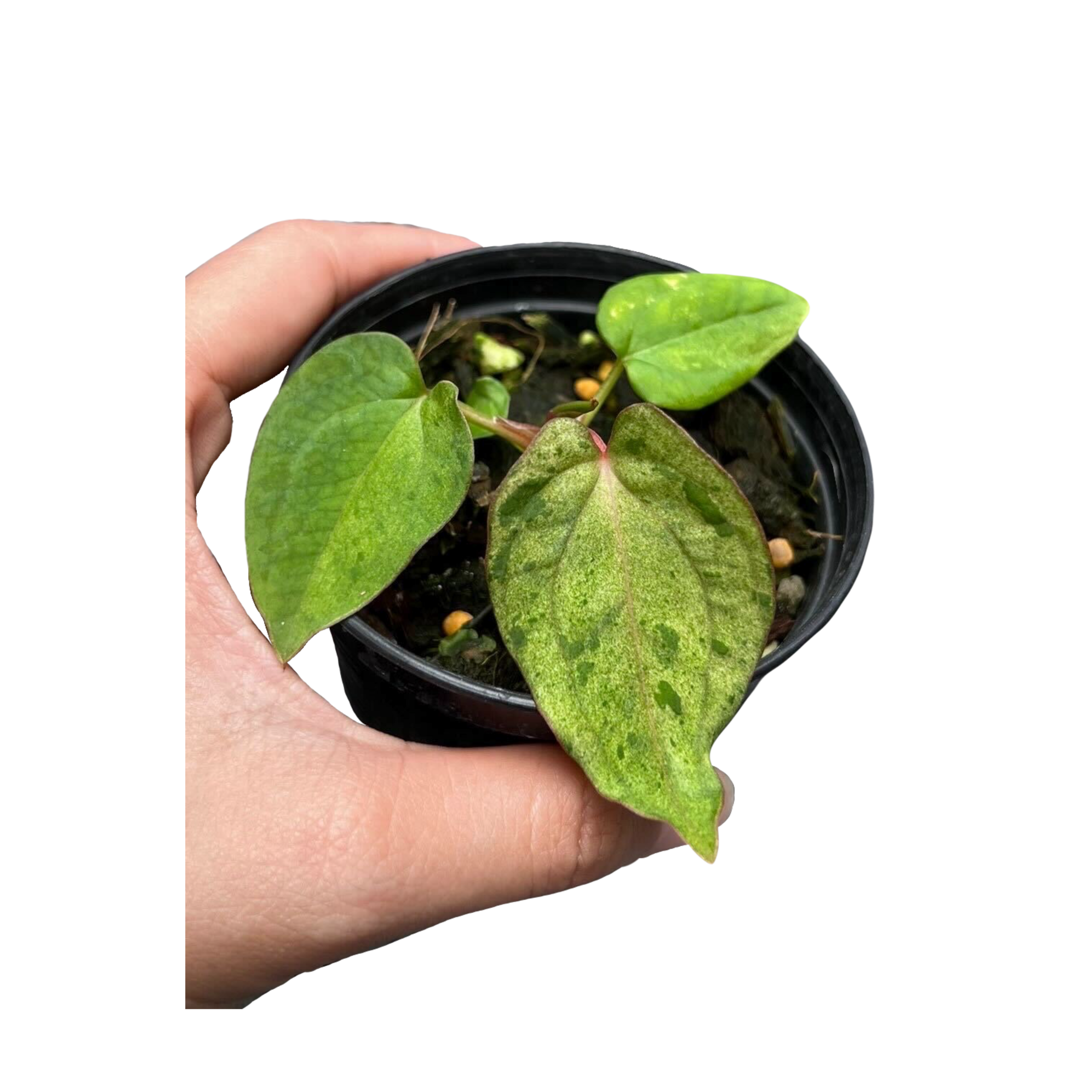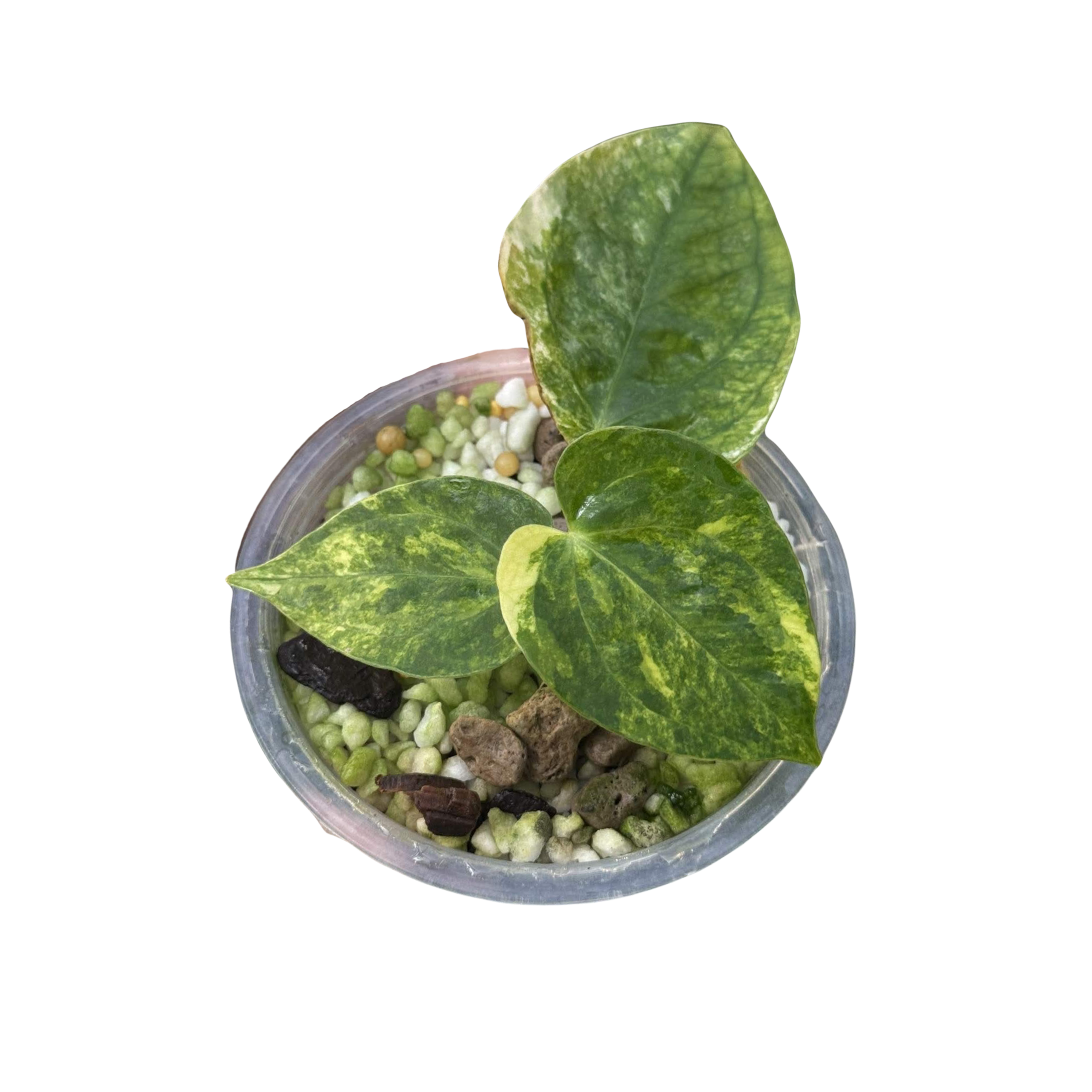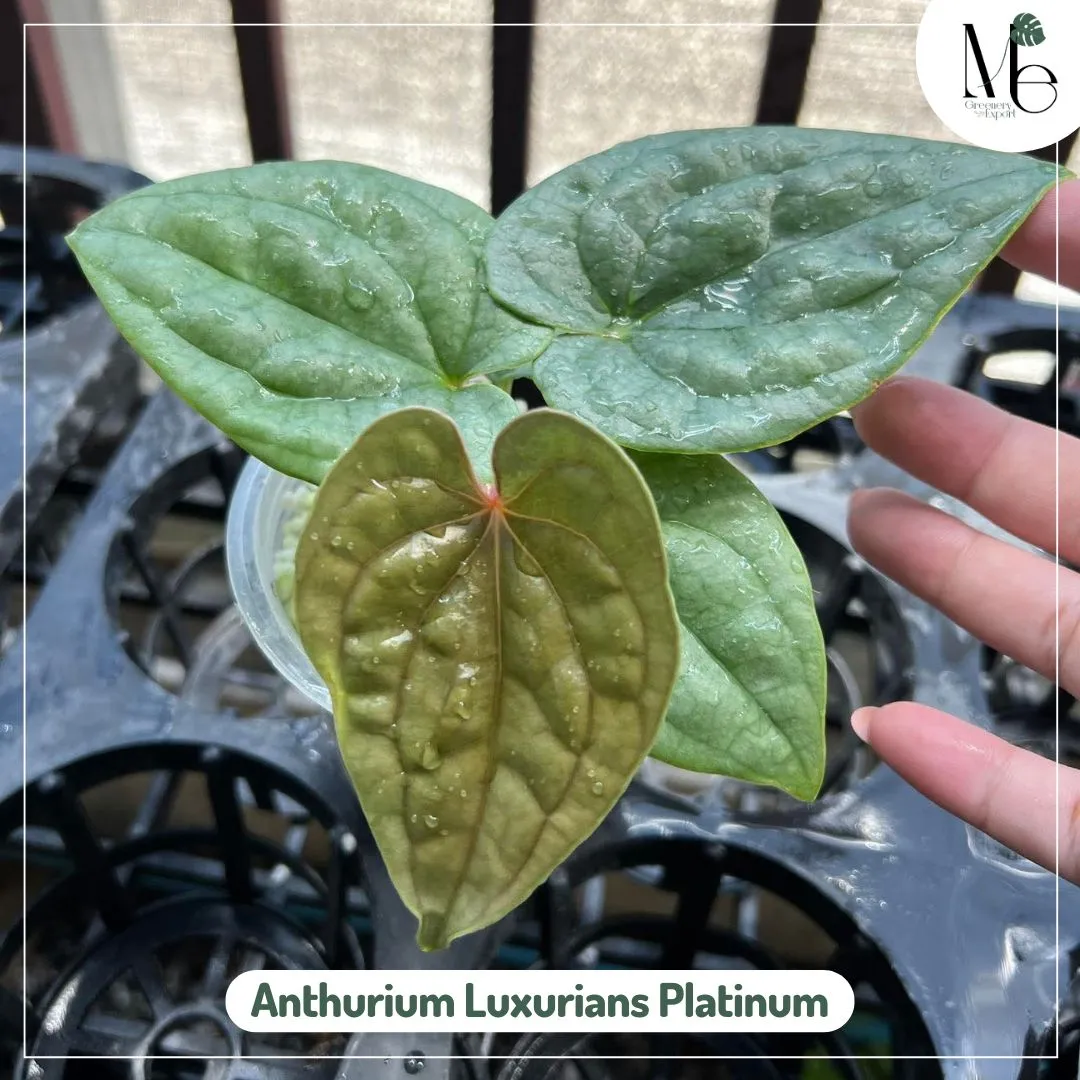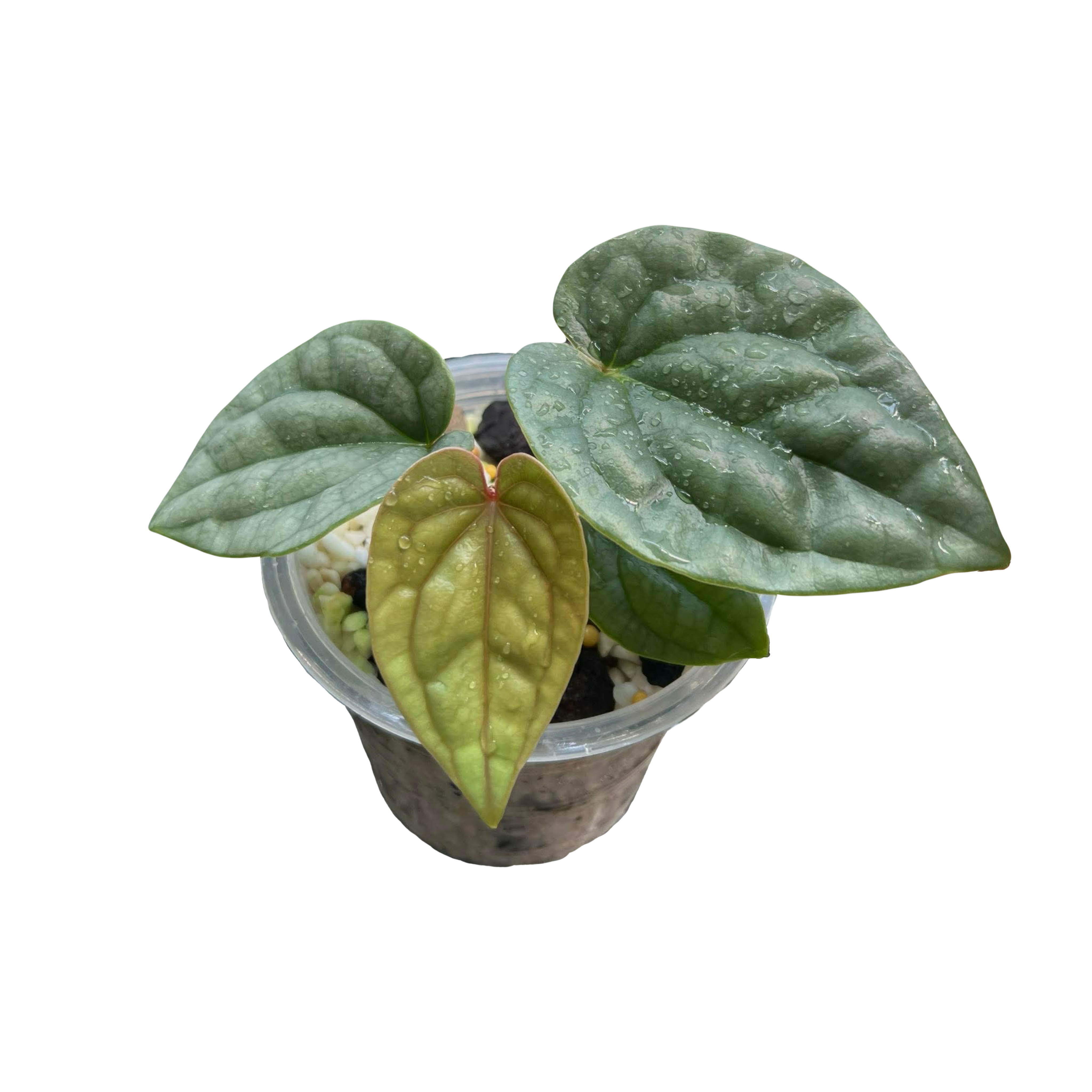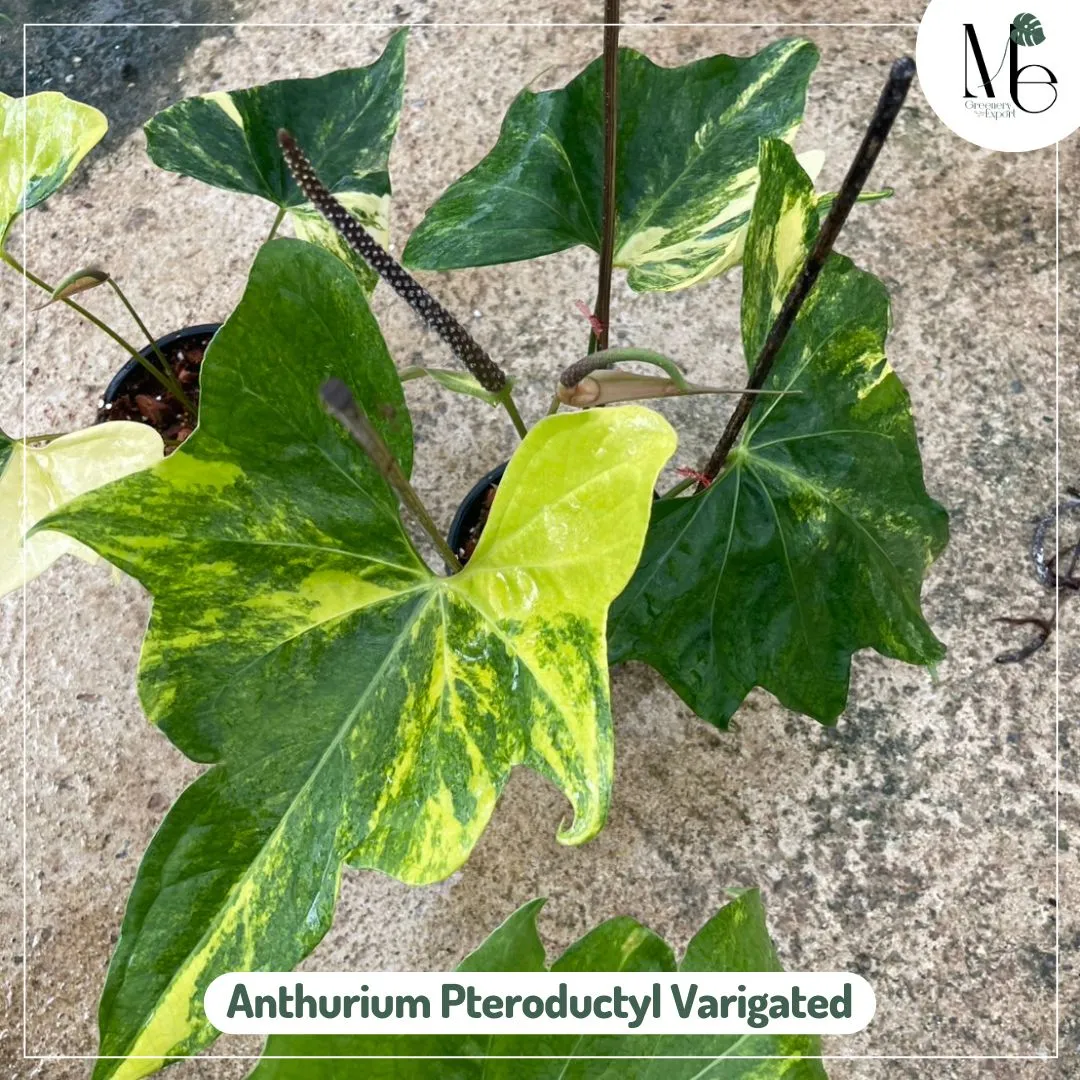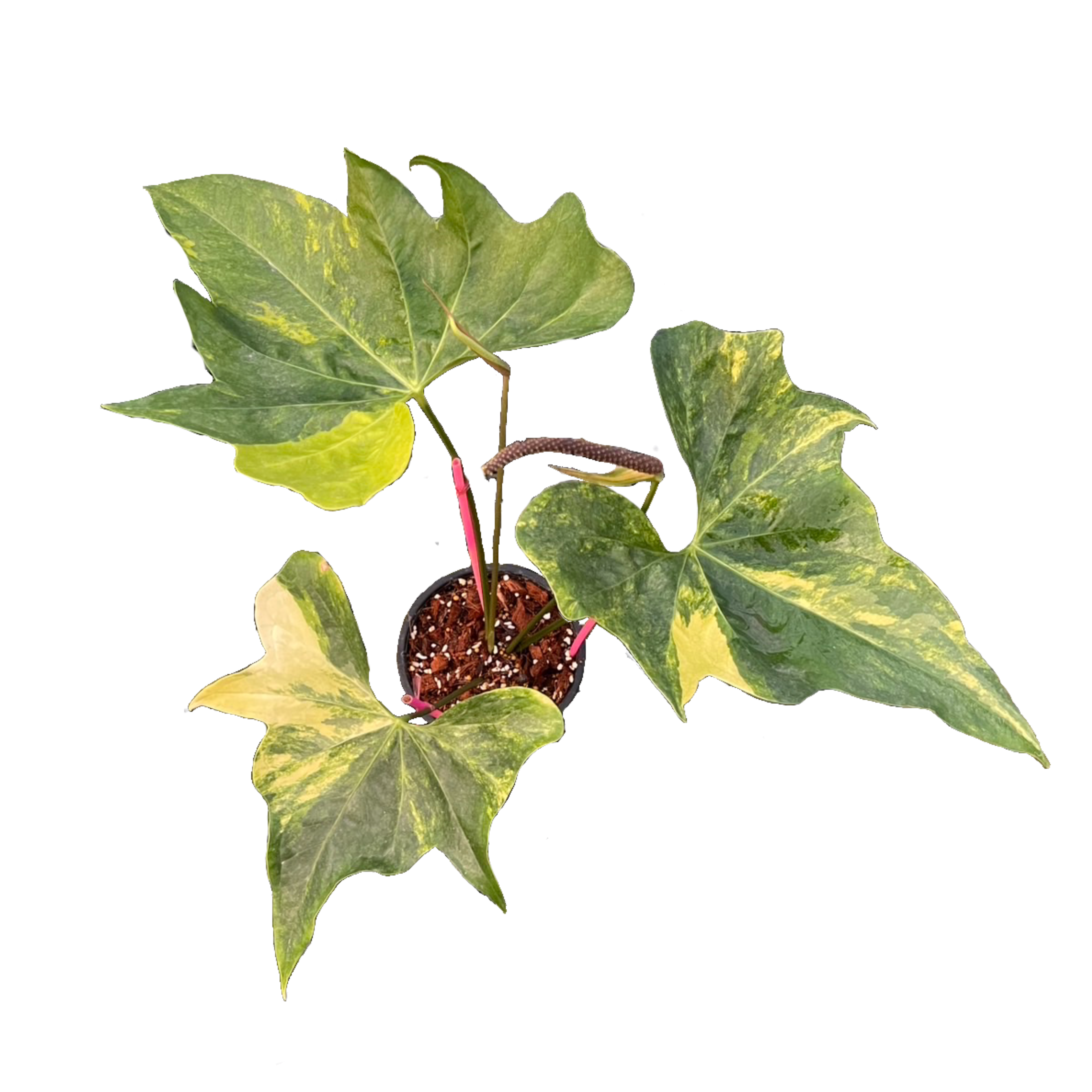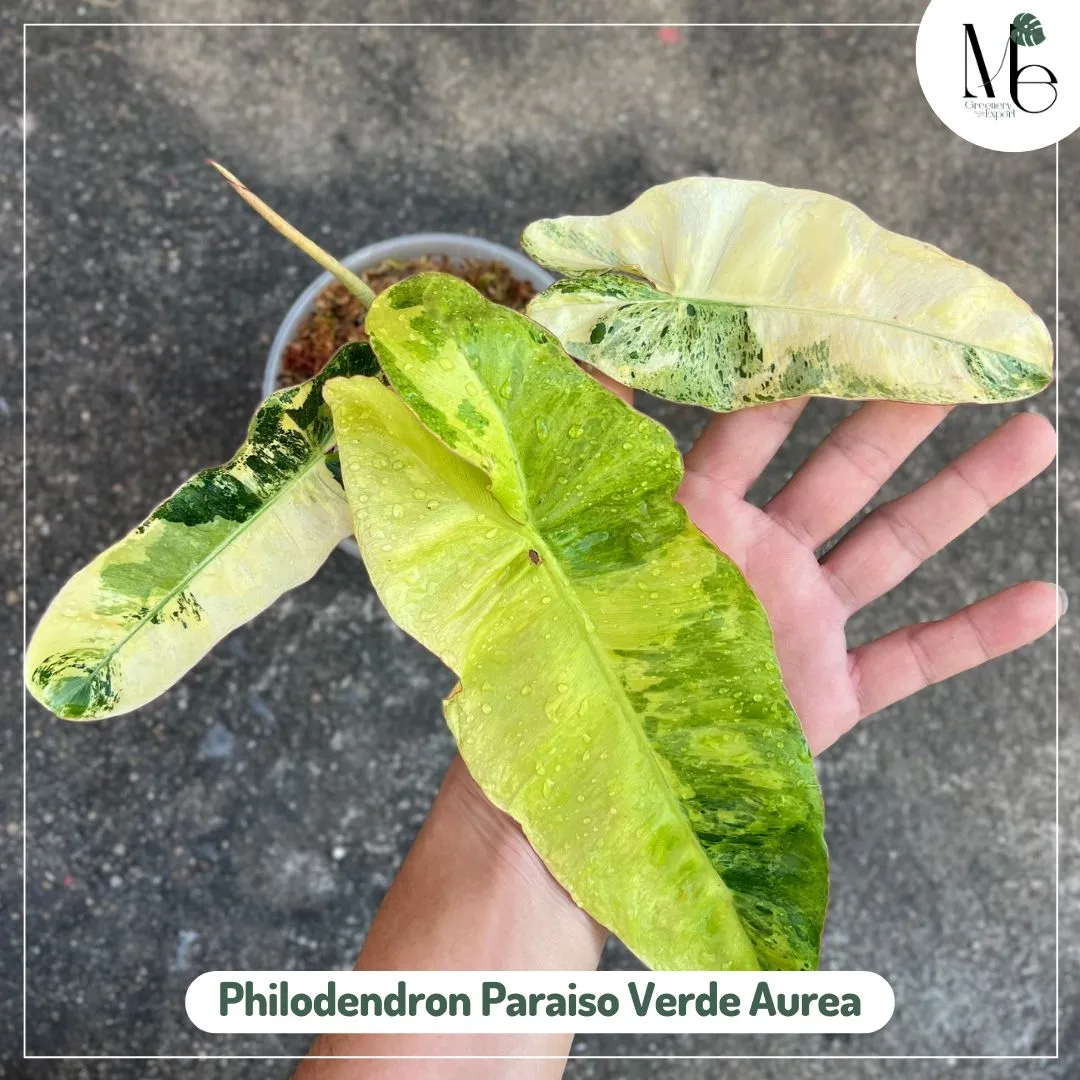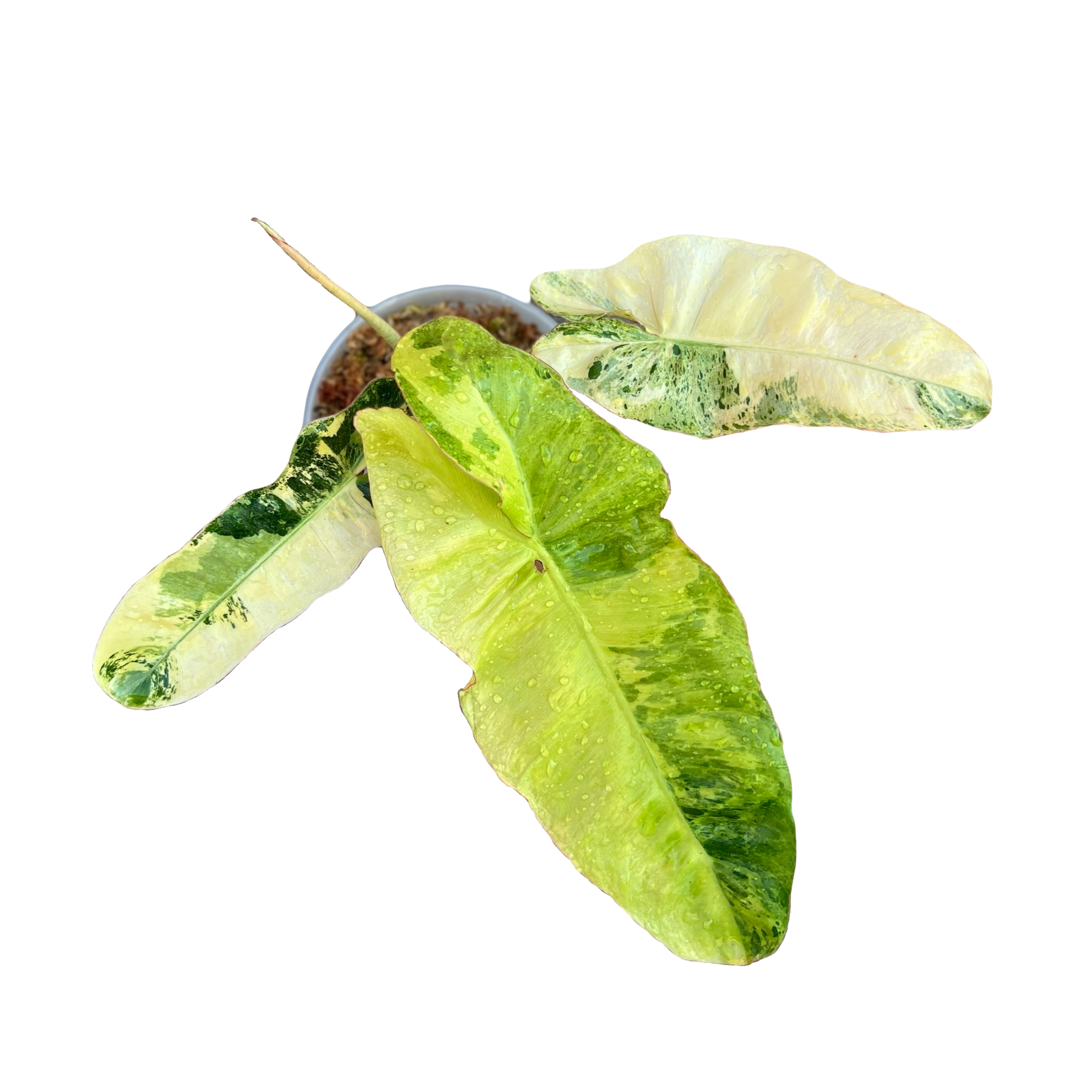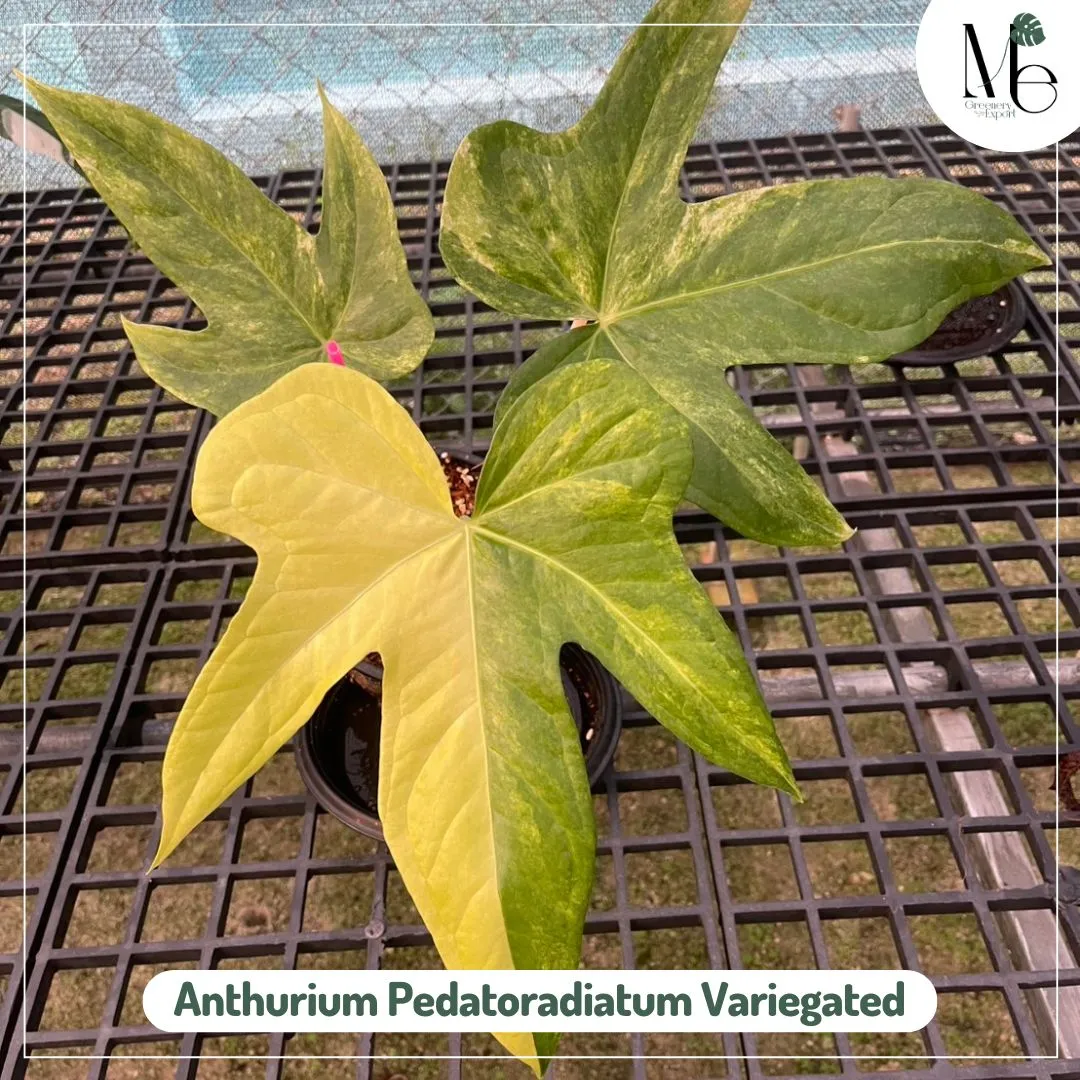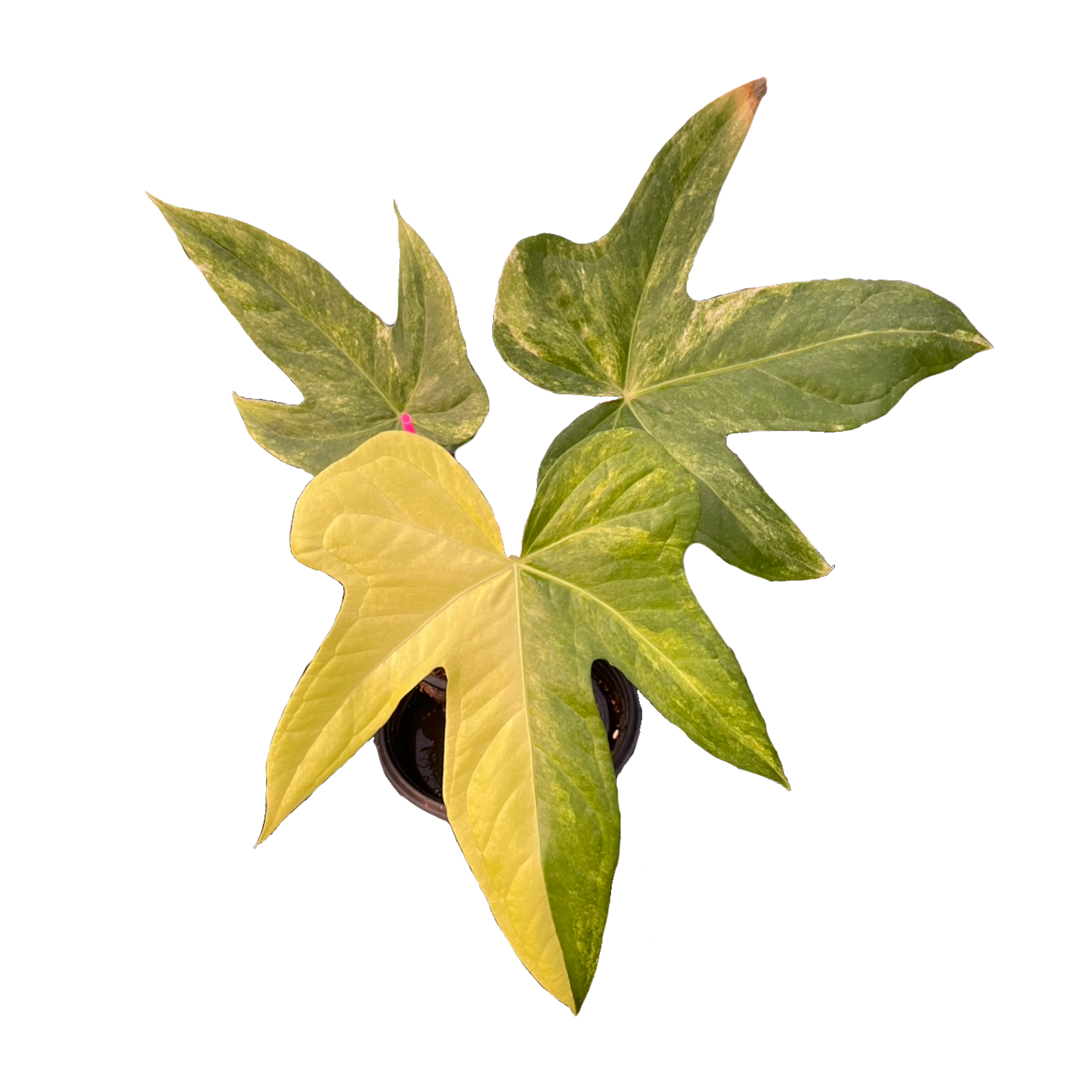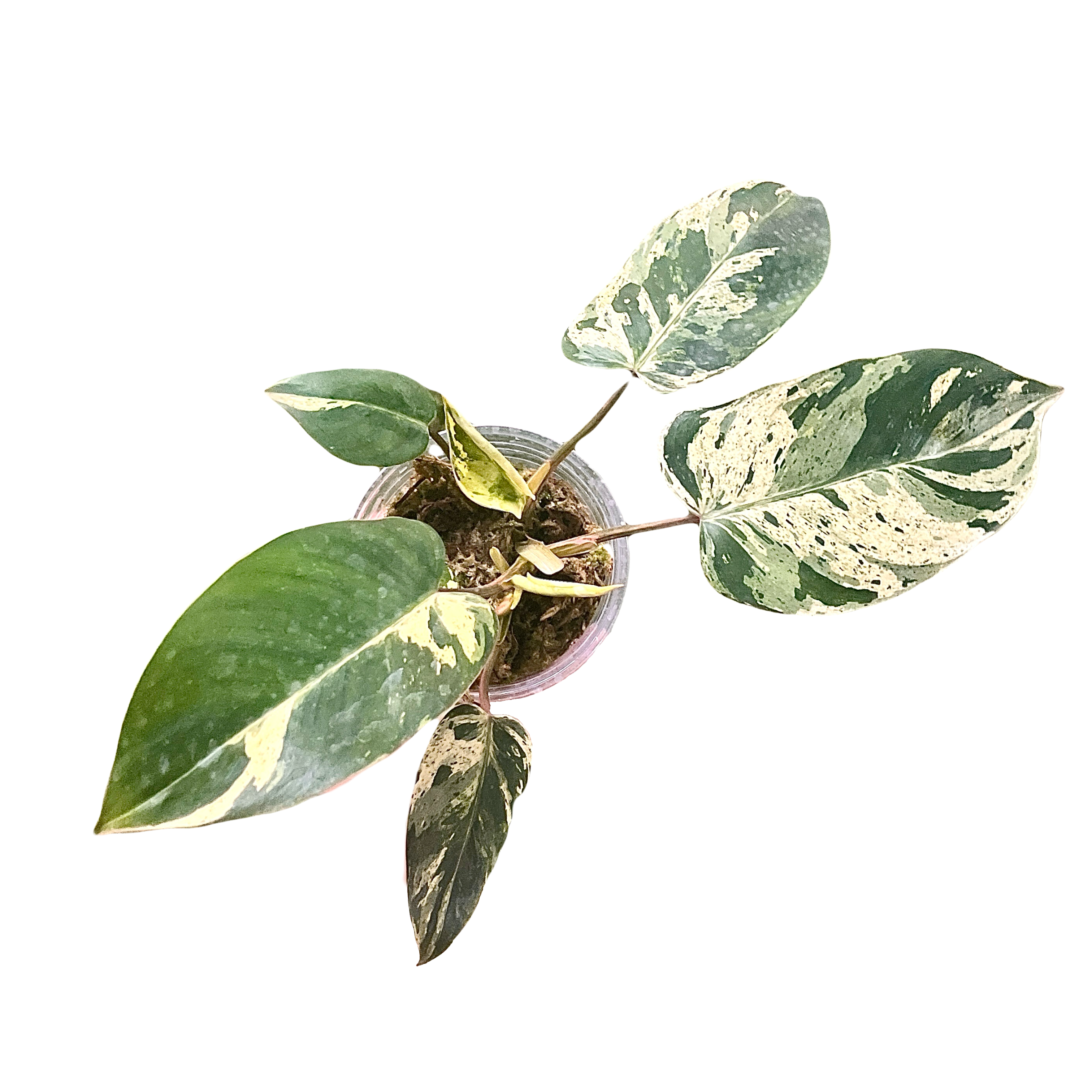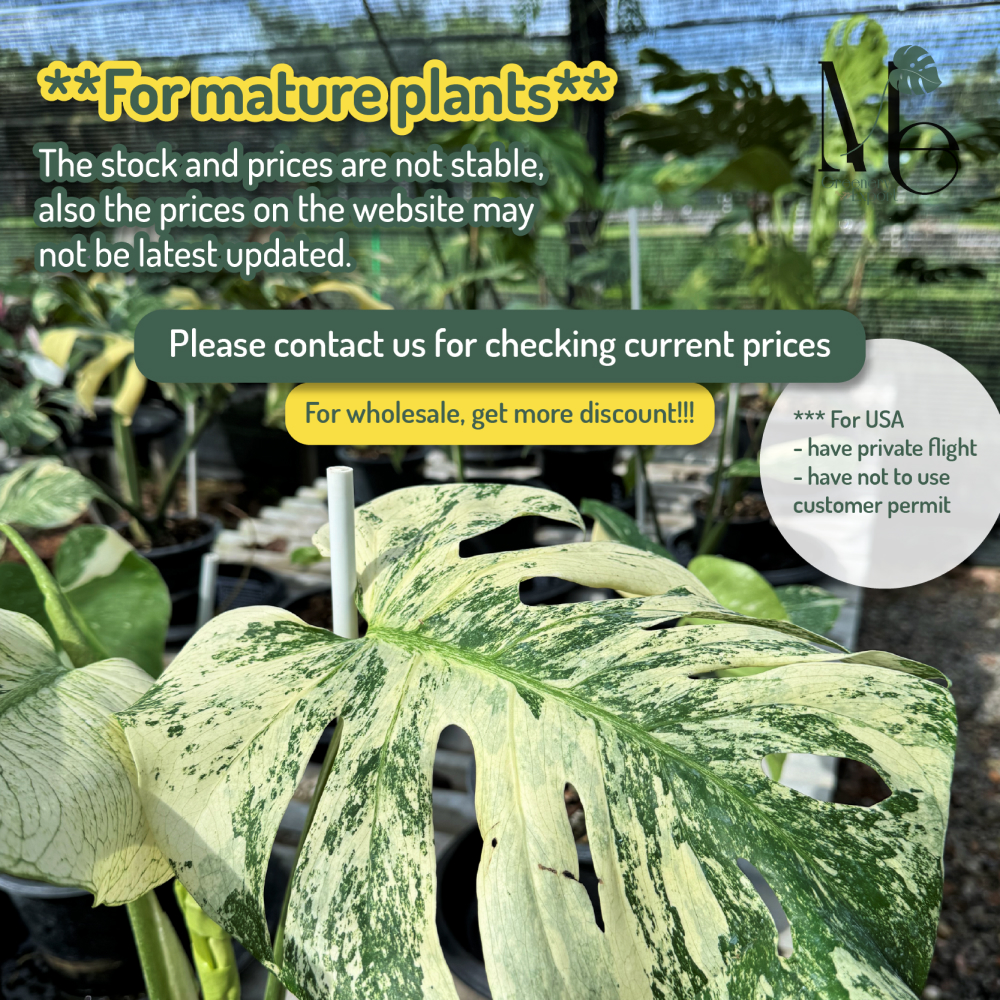Showing 1–20 of 33 resultsSorted by latest
Philodendron Joepii Aurea
The Philodendron Joepii Aurea is a stunning tropical plant known for its striking elongated lance-shaped leaves that boast a vibrant golden-yellow hue. Its foliage can range from bright yellow to warm amber tones, creating a glowing, sunlit effect that instantly brightens any room. The leaves grow upright and have a smooth, glossy texture that enhances their eye-catching appeal. How to care Light: Bright, indirect light (avoid direct sunlight) Water: Water moderately; let the top 1 inch of soil dry out between waterings Humidity: Prefers higher humidity but tolerates average indoor levels Temperature: Ideal range 65-80°F (18-27°C); avoid drafts and sudden changes Soil: Well-draining, airy soil mix How to order *The first image is just for advertising. [post-views]
Share this:
Philodendron Firebird
The Philodendron Firebird is a stunning tropical plant known for its vibrant, fiery foliage that blends shades of deep green, copper, and bronze. With its uniquely lobed leaves and compact, upright growth habit, the Firebird adds a bold, exotic touch to any indoor plant collection. Easy to care for and adaptable to various light conditions How to care Light: Thrives in bright, indirect light. Avoid direct sun, which can scorch the leaves. Tolerates lower light but may grow more slowly. Water: Water when the top 1–2 inches of soil feel dry. Do not let it sit in water—ensure good drainage to prevent root rot. Humidity: Prefers moderate to high humidity. Mist occasionally or use a humidifier in drier environments. Temperature: Keep in a warm environment (65–80°F / 18–27°C). Protect from cold drafts and temps below 55°F (13°C). Soil: Use a well-draining potting mix rich in organic matter—an aroid mix or peat-based soil with perlite works well. How to order *The first image is just for advertising. [post-views]
Share this:
Anthurium BVEP Tezula x BVEP Scott Cohen
This rare hybrid from the Black Velvet Elite Program (BVEP) blends the standout qualities of the Tezula and Scott Cohen lines. It features deep, velvety foliage with striking silver veining and a defined heart shape that commands attention. Compact and slow-growing, it's perfect for collectors seeking refined texture and elite genetics in a manageable size. How to care Light: Prefers bright, indirect light. Avoid direct sun to prevent leaf burn. Water: Keep soil evenly moist, not soggy. Use filtered or distilled water if possible to avoid mineral buildup. Humidity: Needs high humidity (60–80% ideal). Temperature: Thrives in 65–80°F (18–27°C). Avoid drafts and sudden temperature changes. Soil: Use a well-draining aroid mix: orchid bark, perlite, and coco coir or peat.
How to order *The first image is just for advertising. [post-views]Share this:
Anthurium Black Velvet
Anthurium Black Velvet is a rare gem among tropical plants, celebrated for its rich, velvety leaves and bold visual appeal. The deep green, almost black foliage is elegantly shaped like hearts and traced with striking silver veins, giving it a sophisticated, high-contrast look. Compact in size but big on impact, this unique plant is a must-have for collectors and lovers of distinctive indoor greenery. How to care Light: Prefers bright, indirect light. Can tolerate lower light but will grow more slowly. Water: Keep the soil consistently moist but not soggy. Reduce watering in cooler months. Humidity: Thrives in high humidity (60–80%). Dry air can cause browning leaf edges. Temperature: Ideal range: 65–80°F (18–27°C) Not frost-tolerant. Soil: Use a well-draining, chunky mix – ideal components include orchid bark, perlite, and peat or coco coir.
How to order *The first image is just for advertising. [post-views]Share this:
Philodendron Red Congo Variegated
The Philodendron Red Congo Variegated is a stunning tropical plant prized for its large, glossy leaves that blend deep burgundy-red hues with striking variegation. Each leaf showcases rich, wine-red tones contrasted by irregular splashes or patches of creamy white and soft pink variegation, making it a truly unique and dynamic specimen. Its upright, robust growth habit adds a powerful architectural element to any indoor garden. How to care Light: Prefers bright, indirect light to maintain vibrant color and variegation. Avoid direct sun to prevent leaf burn. Water: Water when the top inch of soil feels dry. Avoid overwatering to protect roots. Humidity: Enjoys moderate to high humidity levels for best growth and leaf quality. Temperature: Thrives in warm conditions between 65–80°F (18–27°C). Protect from cold drafts. Soil: Use well-draining, airy soil mix with components like perlite or orchid bark. [order_button_social] *The first image is just for advertising. [post-views]
Share this:
Philodendron Red Moon
The Philodendron Red Moon is a unique tropical plant known for its large, heart-shaped leaves that emerge with a stunning deep red or reddish-pink hue. As the leaves mature, they often develop a rich, dark green color with red undersides, creating a dramatic two-tone effect. Its compact, upright growth makes it perfect for indoor spaces where you want a pop of bold color without taking up too much room. How to care Light: Bright, indirect light brings out the best color. Avoid harsh direct sun to prevent leaf burn. Water: Water when the top 1–2 inches of soil dry out. Don’t let it sit in water. Humidity: Prefers moderate to high humidity but tolerates average indoor air. Temperature: Thrives between 65–80°F (18–27°C). Protect from cold drafts. Soil: Use well-draining potting mix with good aeration. How to order *The first image is just for advertising. [post-views]
Share this:
Philodendron Distantilobum Variegated
The Philodendron Distantilobum Variegated is a rare tropical gem known for its uniquely shaped, deeply lobed leaves that create a bold, sculptural look. Each leaf features pronounced cuts, giving it an intricate and textured silhouette unlike most philodendrons. This striking leaf form is paired with beautiful variegation—splashes and patches of creamy white or pale yellow contrast sharply against rich green, making every leaf a one-of-a-kind masterpiece. How to care Light: Bright, indirect light preserves vibrant variegation and healthy leaves; avoid direct sun. Water: Water when the top 1–2 inches of soil are dry; don’t overwater. Humidity: Prefers moderate to high humidity. Temperature: Thrives between 65–80°F (18–27°C); avoid cold drafts. Soil: Use well-draining, airy soil with peat and perlite. How to order *The first image is just for advertising. [post-views]
Share this:
Philodendron Florida x Paraiso Variegated
The Philodendron Florida x Paraiso Variegated is a stunning hybrid that combines the dramatic foliage of Philodendron Florida with the vibrant variegation of Paraiso Verde. This plant features glossy, deeply lobed leaves marked by striking patterns of creamy white or pale yellow variegation over a rich green base. Its bold texture, sculptural form, and shifting color patterns make it a true standout. Due to its limited availability and unpredictable variegation, it’s considered a rare and highly sought-after plant among collectors. How to care Light: Bright, indirect light is ideal to preserve variegation. Avoid harsh direct sun. Water: Water when the top 1–2 inches of soil are dry. Keep soil moist but not soggy. Humidity: Prefers moderate to high humidity; mist or use a humidifier if needed. Temperature: Thrives in 65–80°F (18–27°C); protect from cold air and drafts. Soil: Well-draining mix with peat, perlite, and orchid bark. How to order *The first image is just for advertising. [post-views]
Share this:
Anthurium Portilae NSE
This rare and beautiful Anthurium Portilae NSE is known for its dark, velvety leaves and unique shape that looks like a triangle or “Dorito” chip. The leaves are deep green to almost black, sometimes with silver or purple highlights. It’s a favorite among plant collectors for its bold look and strong growth. The ‘NSE’ form is a special type selected for its amazing leaf shape and color. How to care Light: Bright, indirect sunlight Water: Keep soil slightly moist—don’t let it dry out completely Humidity: Loves high humidity (70%+) Temperature: Warmth is best (65–80°F or 18–27°C) Soil: Well-draining aroid mix (bark, perlite, peat)
How to order *The first image is just for advertising. [post-views]Share this:
Philodendron Paraiso Verde Albo
The Philodendron Paraiso Verde Albo is a captivating plant known for its stunning contrast of deep green leaves splashed with bright white variegation. Its medium-sized, elongated heart-shaped leaves showcase unique, irregular patches of white that vary from leaf to leaf, creating a dynamic and eye-catching display. With a versatile, semi-climbing growth habit, it adapts well to different indoor spaces and styling preferences. How to care Light: Bright, indirect light helps maintain vibrant variegation without burning leaves. Water: Allow the top 1–2 inches of soil to dry before watering. Avoid overwatering. Humidity: Prefers moderate to high humidity but tolerates average indoor conditions. Temperature: Thrives in temperatures between 65–80°F (18–27°C). Keep away from drafts. Soil: Use a well-draining, airy potting mix with components like perlite or orchid bark. How to order *The first image is just for advertising. [post-views]
Share this:
Anthurium RVDP Mint x Papillilaminum Variegated
The Anthurium RVDP Mint x Papillilaminum Variegated is a rare and captivating hybrid that combines the striking features of the Red Vein Dark Phoenix (RVDP) Mint and the elegant Papillilaminum. This unique cross results in a plant that showcases the best attributes of both parent plants, making it a prized addition to any collection. How to care Light: Provide bright, indirect light. Direct sunlight can scorch the leaves. Watering: Keep the soil consistently moist but not waterlogged. Water when the top inch of soil is dry. Humidity: Requires high humidity levels (60–80%). Use a humidifier or mist the plant regularly. Temperature: Ideal temperatures range from 65°F to 80°F (18°C to 27°C). Protect from cold drafts. Soil: Use a well-draining mix, such as orchid bark, perlite, and peat moss.
How to order *The first image is just for advertising. [post-views]Share this:
Anthurium Crystal selected x ZARA
This unique hybrid, Anthurium Crystal selected x ZARA, is a refined cross between two of the most admired aroids in the collector world: the velvet-leafed Anthurium crystallinum and the richly veined Anthurium ZARA. The result is a striking plant that combines the best of both lineages—luxurious texture, sculptural form, and dramatic visual contrast. How to care Light: Bright, indirect light for optimal coloration and growth. Watering: Keep soil evenly moist but not soggy. Allow top inch to dry between waterings. Humidity: Prefers high humidity (60%+); consider a humidifier or greenhouse environment. Temperature: Ideal temperatures range from 65°F to 80°F (18°C to 27°C). Protect from cold drafts. Soil: Well-draining, airy mix (orchid bark, perlite, sphagnum moss).
How to order *The first image is just for advertising. [post-views]Share this:
Anthurium RVDP Mint x RVDP Mint
The Anthurium RVDP Mint x RVDP Mint is a refined cross between two Red Vein Dark Phoenix (RVDP) parents that both carry rare mint variegation, making this hybrid exceptionally unique. This plant doesn’t just turn heads — it practically glows. With its soft, minty green tones, intricate veining, and luxurious velvet leaves, it’s a must-have for serious aroid collectors. How to care Light: Bright, filtered light; no harsh direct sun Watering: Water when topsoil feels slightly dry; avoid soggy roots Humidity: 70%+ is ideal — use a pebble tray or humidifier Temperature: Prefers warmth (65–85°F / 18–29°C) Soil: Chunky, breathable mix (orchid bark, perlite, coco coir)
How to order *The first image is just for advertising. [post-views]Share this:
Anthurium Pap var. x Green Mamba Variegated
Bring bold color and rare beauty into your space with the Anthurium Pap var. x Green Mamba Variegated. This stunning hybrid combines the best traits of two sought-after varieties, featuring uniquely variegated leaves with striking patterns in shades of green, cream, and white. Each leaf is a one-of-a-kind work of art, making this plant a standout in any collection. How to care Light: Place in bright, indirect light. Avoid direct sunlight, which can burn the leaves or fade the variegation. Watering: Water when the top 1–2 inches of soil feels dry. Don't let the plant sit in water. Humidity: Aim for moderate to high humidity. Temperature: Keep in temperatures between 65–80°F (18–27°C) Soil: A blend of orchid bark, perlite, and potting soil is ideal. Good drainage is key to prevent root rot.
How to order *The first image is just for advertising. [post-views]Share this:
Anthurium Luxurians Platinum
Anthurium Luxurians Platinum is an extraordinary and rare cultivar of Anthurium Luxurians. Anthurium mostly have dark green leaves, but The "Platinum" variety is a particularly sought-after cultivar, valued for its glossy, metallic-like appearance and distinctive features. How to care Light: Thrives in bright, indirect light, and while it can tolerate lower light levels, variegation may diminish. Watering: Regular watering when the top 1-2 inches of soil is dry is important. Humidity: Prefers high humidity (60%+). Use a humidifier or mist the leaves. Temperature: Keep in a warm environment, ideally between 65-80°F (18-27°C). Soil: Prefers well-draining soil and moderate humidity.
How to order *The first image is just for advertising. [post-views]Share this:
Anthurium Pterodactyl Variegated
The Anthurium Pterodactyl Variegated is a rare and stunning variety of Anthurium, known for its unique, elongated, and strikingly unusual leaf shape, which resembles the wings of a pterodactyl (hence the name). The variegated version of this plant adds a beautiful and sought-after twist, with the distinctive marbled patterns of cream, white, or yellow contrast with the deep green of the leaves. How to care Light: Aims for a spot where the light is filtered or diffused, like near a window with sheer curtains. Watering: Allow the top few inches of soil to dry out before watering again. Humidity: Loves high humidity, ideally 60% and above. Temperature: Keep the temperature between 65°F to 80°F (18°C to 27°C). Soil: Use a well-draining potting mix, such as one designed for aroids.
How to order *The first image is just for advertising. [post-views]Share this:
Philodendron Paraiso Verde Aurea
The Philodendron Paraiso Verde Aurea is a very new version of the Philodendron Paraiso Verde. It is a relatively rare variety. This plant is known for its striking variegated leaves, which feature a mix of dark green and vibrant yellow-gold patterns. These variegations can appear in different forms, from speckles to large streaks, which make the plant especially eye-catching. How to care Light: Prefers bright, indirect light. Direct sunlight can scorch its leaves, while too little light will reduce its variegation and slow its growth. Soil: Prefers a well-draining, lightweight potting mix. A peat-based mix with added perlite or sand works well Watering: Water it when the top 1-2 inches of soil feels dry. Humidity: Enjoys higher humidity levels, so it’s a good idea to mist it occasionally or place it near a humidifier, especially in dry climates. Temperature: The ideal temperature range is between 65°F and 80°F (18°C to 27°C).
How to order *The first image is just for advertising. [post-views]Share this:
Anthurium Pedatoradiatum Variegated
The Anthurium Pedatoradiatum Variegated’s overall appearance is both elegant and dramatic, making it a favorite among collectors. It is known for its unique, deeply dissected leaves and stunning variegated patterns. The leaves have a distinctive, finger-like shape that makes it stand out, and the variegation ranges from creamy white to soft yellow, creating a beautiful contrast with the dark green background. How to care Light: This plant thrives in bright, indirect light. Direct sunlight can damage the leaves, leading to burn marks or fading of the variegation. Soil: A mix designed for aroids, or a combination of peat, perlite, and orchid bark, is ideal for encouraging healthy root development. Watering: Water the plant when the top of the soil feels dry to the touch, but ensure excess water doesn’t collect in the saucer. Humidity: Ideally, humidity levels should be above 60%. Temperature: It prefers warm temperatures, ideally between 65°F and 80°F (18°C to 27°C).
How to order *The first image is just for advertising. [post-views]Share this:
Philodendron Emerald Queen Variegated
Philodendron Emerald Queen Variegated is considered a rare and highly sought-after variety, particularly due to its striking variegated leaves. The variegation—white, cream, or yellow patches on the typically dark green foliage—makes this plant much more unique and desirable than the standard Philodendron Emerald Queen. How to care Light: Thrives in bright, indirect light. Direct sunlight may scorch its delicate leaves and cause the variegated areas to burn. Soil: A tropical plant mix with perlite or orchid bark is perfect for ensuring proper drainage while retaining enough moisture. Watering: Keep the soil evenly moist, allowing the top few inches to dry out between waterings. Humidity: Aim for 50-60% humidity to keep it healthy and to prevent leaf curling or browning. Temperature: Prefers warm conditions, typically between 65°F and 80°F (18°C–27°C). Avoid temperatures below 50°F (10°C), as it can damage the plant.
How to order *The first image is just for advertising. [post-views]Share this:
Anthurium Spp.
This is an unknown Anthurium variety. The leaves have a mix of dark green with hot pink and purple variegated, making this Anthurium looks different among the others. The purple variegation that catches the eyes is a rare shade of variegated plants. How to care Light: Bright, indirect light is best. But too little light can bring down the colors. Soil: A soil mix that doesn't retain too much water but allows for adequate moisture retention is the right choice. Watering: Keep the soil consistently moist but not soggy. Humidity: High humidity (60% or more) is ideal. Temperature: Keep the plant away from cold drafts and sudden temperature changes. It thrives in warm temperatures between 65°F and 85°F (18°C to 29°C).
How to order *The first image is just for advertising. [post-views]Share this:
Showing 1–20 of 33 resultsSorted by latest

